Spanish style kitchens blend timeless elegance with warm Mediterranean charm, creating spaces that feel both sophisticated and inviting. These kitchens embrace natural materials, rich textures, and earthy color palettes that transport you to sun-drenched Spanish villas. From hand-painted ceramic tiles to wrought iron accents, Spanish kitchen design celebrates authentic craftsmanship and cultural heritage. Whether you're planning a complete renovation or adding subtle Spanish touches, these design ideas showcase how traditional elements can create stunning focal points. Modern interpretations maintain the warmth and character while incorporating contemporary functionality. Spanish kitchens prioritize gathering spaces where families connect over shared meals, emphasizing both beauty and practicality in every design choice.
1. Terracotta Floor Tiles with Herringbone Patterns
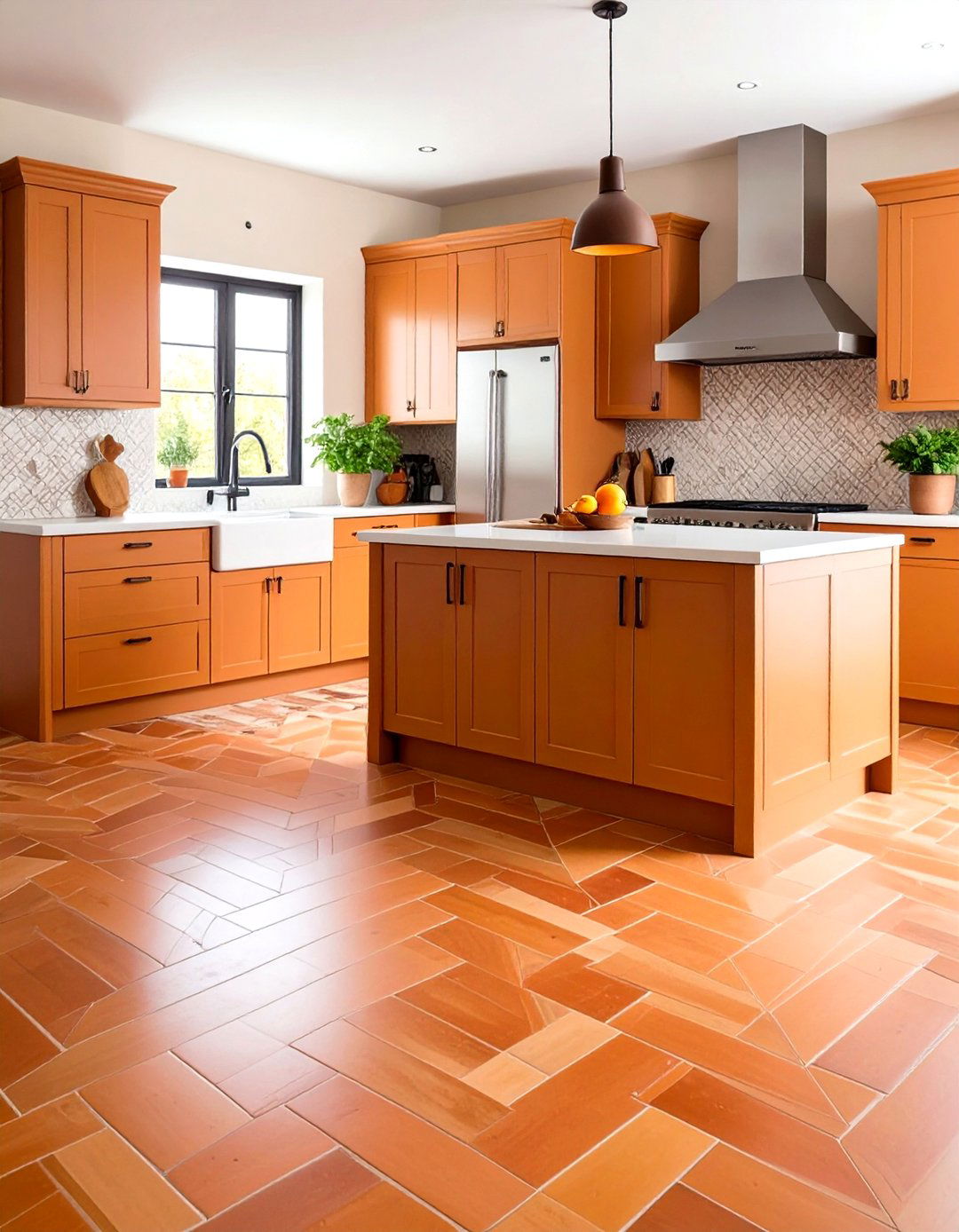
Terracotta flooring creates the foundation for authentic Spanish kitchen design, bringing warmth and rustic charm to your culinary space. These clay tiles offer natural variation in color and texture, ranging from deep oranges to warm browns. Consider installing them in a herringbone pattern to add visual interest and movement across your kitchen floor. The porous nature of terracotta provides excellent insulation, keeping your kitchen comfortable year-round. Pair terracotta floors with cream-colored walls and dark wood cabinetry for a classic Spanish aesthetic. These tiles develop a beautiful patina over time, becoming even more characterful with age. Sealed terracotta requires minimal maintenance while delivering maximum visual impact.
2. Hand-Painted Ceramic Backsplash Designs
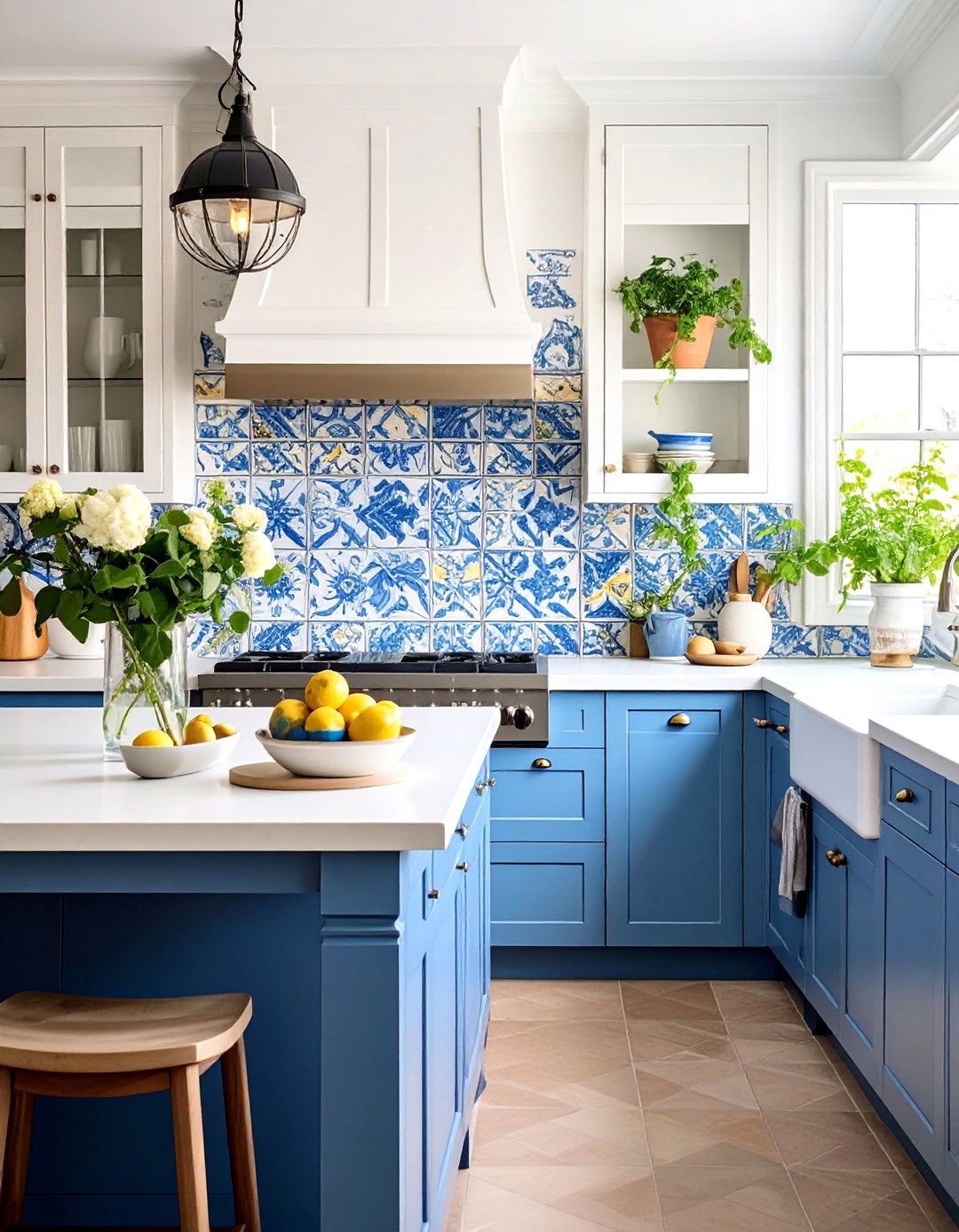
Transform your kitchen with vibrant hand-painted ceramic tiles that showcase traditional Spanish artistry. These decorative tiles feature intricate patterns in blues, yellows, greens, and terracotta tones, creating stunning focal points behind your stove or sink. Each tile tells a story through its unique brushstrokes and artistic imperfections that add authentic character. Mix solid-colored tiles with patterned ones to achieve balanced visual appeal without overwhelming the space. Consider using larger format tiles for modern interpretations or smaller squares for traditional Spanish charm. The glossy finish reflects light beautifully, making your kitchen feel brighter and more spacious while celebrating centuries-old Spanish ceramic traditions.
3. Wrought Iron Chandelier Statement Lighting
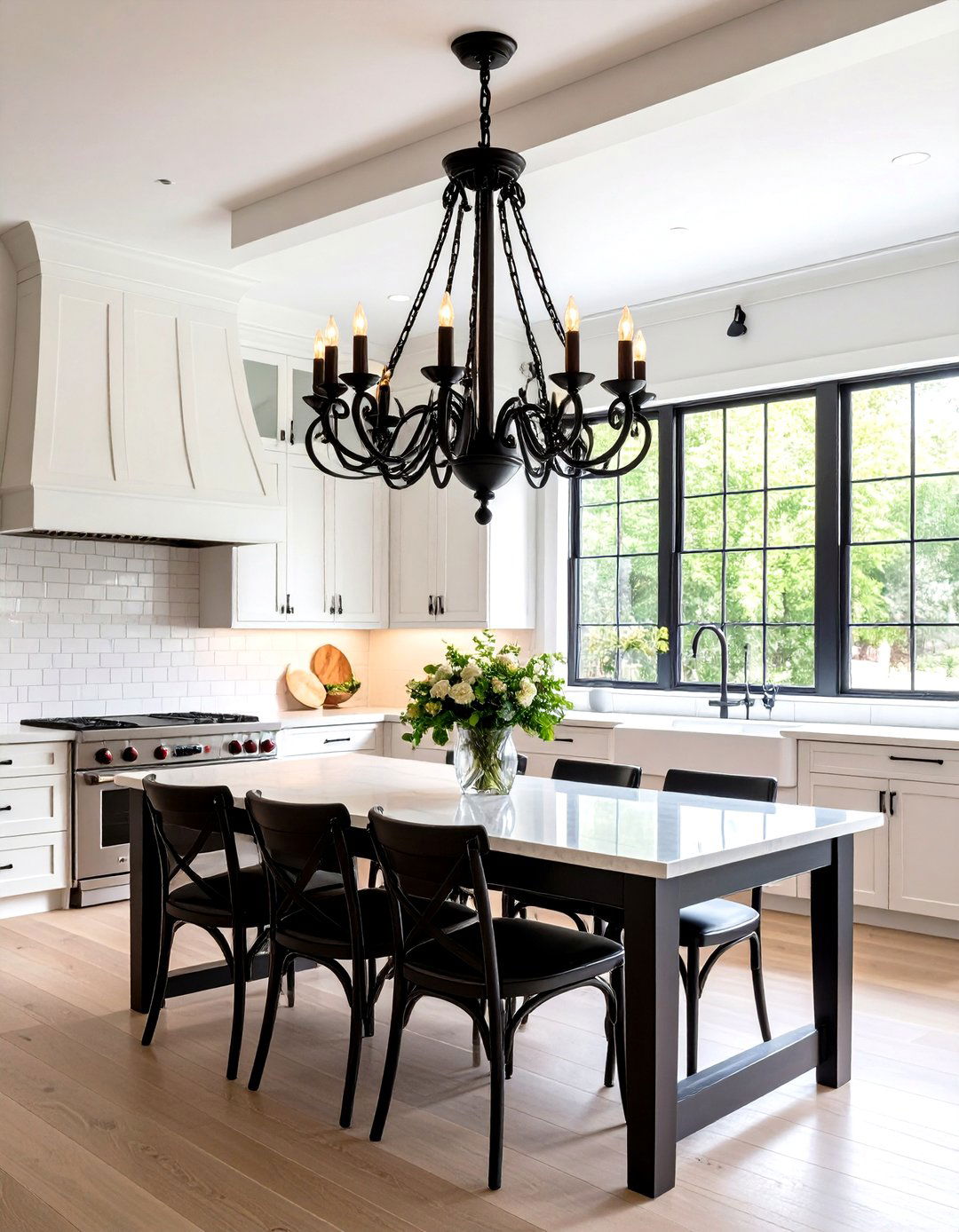
What better way to illuminate your Spanish kitchen than with an ornate wrought iron chandelier? These dramatic fixtures serve as artistic centerpieces while providing warm, ambient lighting for cooking and entertaining. Choose designs featuring intricate scrollwork, candelabra-style arms, or rustic finishes that complement your kitchen's overall aesthetic. Wrought iron chandeliers work beautifully over kitchen islands, dining nooks, or in open-concept spaces where they can command attention. The dark metal contrasts beautifully with lighter elements like white walls or natural stone countertops. Consider dimmable options to create the perfect ambiance for intimate family dinners or lively gatherings with friends.
4. Dark Wood Cabinet Construction with Rich Stains
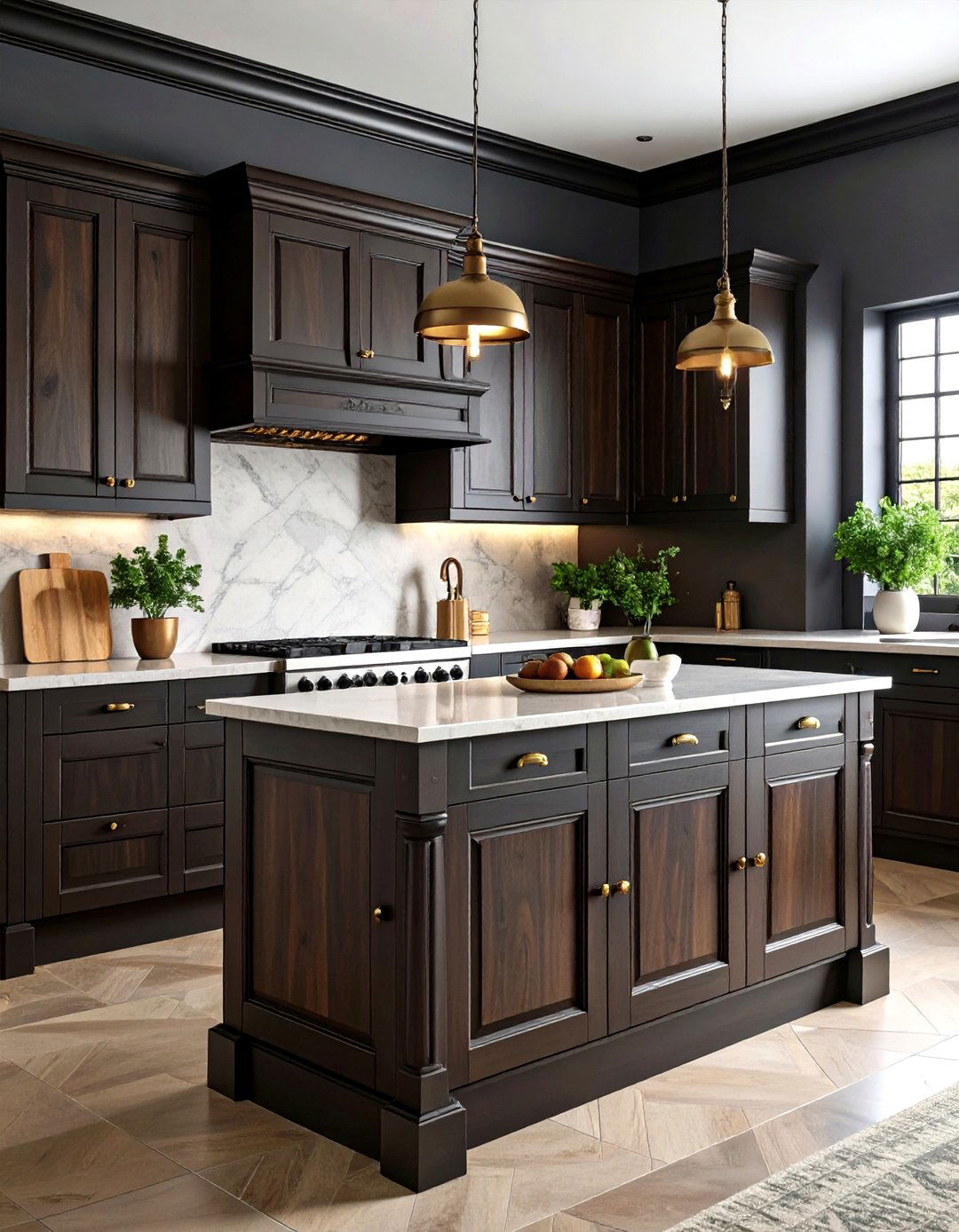
Embrace the depth and warmth of dark wood cabinetry that defines Spanish kitchen design. Rich walnut, mahogany, or deeply stained oak cabinets provide the perfect backdrop for colorful tiles and metallic accents. These substantial cabinets often feature raised panel doors, rope trim, or carved details that reflect Spanish craftsmanship traditions. Dark wood naturally ages beautifully, developing richer patina over time while maintaining its structural integrity. Pair dark cabinetry with lighter countertops like cream-colored stone or butcher block to create pleasing contrast. The natural wood grain adds texture and visual interest, making each cabinet door unique. Consider adding glass-front doors to display beautiful Spanish pottery or colorful dishware.
5. Cooking Alcove Designs with Arched Openings
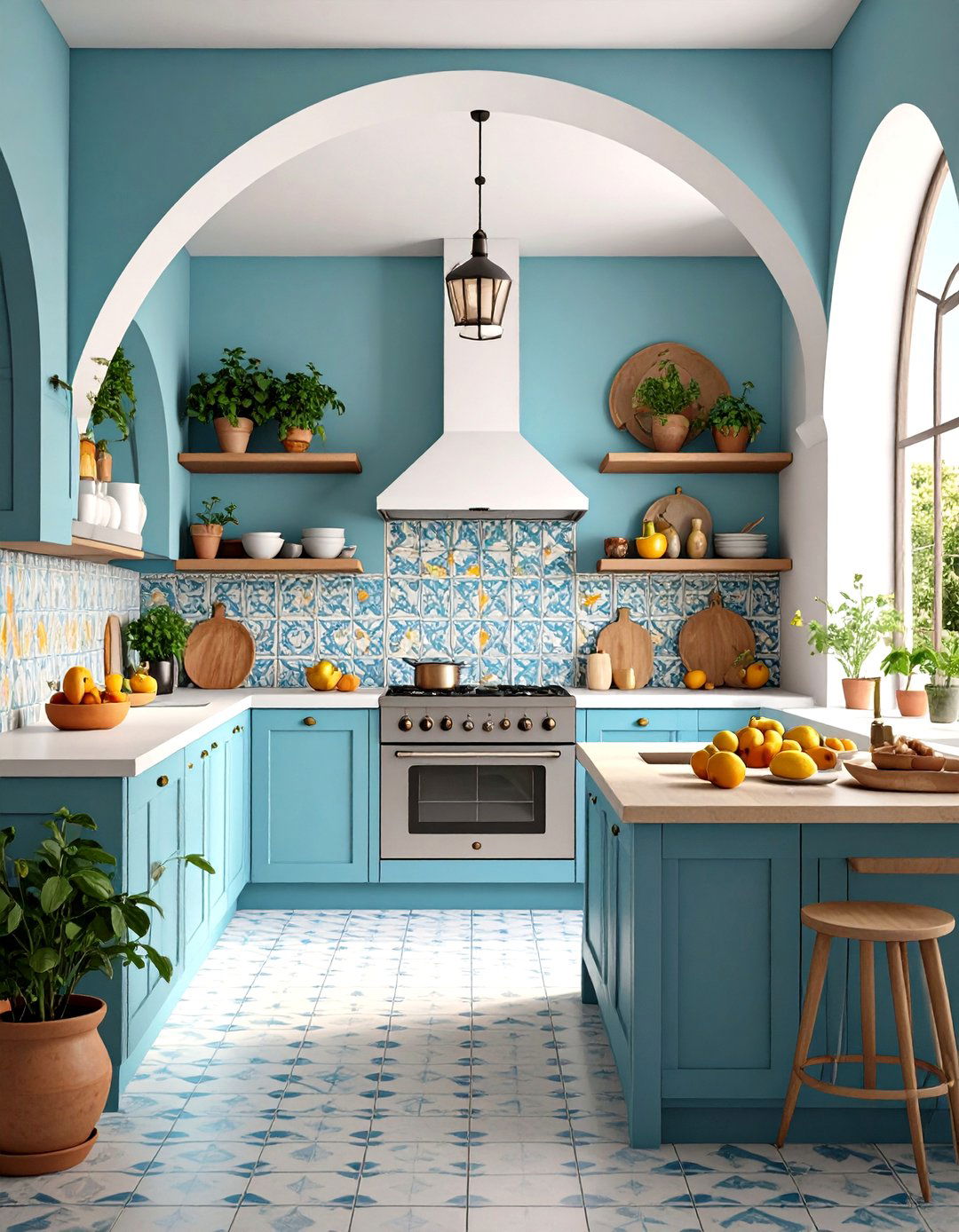
Create a dedicated culinary sanctuary with a traditional Spanish cooking alcove that frames your range in architectural beauty. These recessed spaces often feature arched openings that echo Spanish doorways and windows, creating visual continuity throughout your home. Line the alcove with decorative tiles, natural stone, or painted plaster for authentic texture and easy cleanup. Built-in shelving on either side provides convenient storage for spices, oils, and cooking utensils within arm's reach. Would you enjoy having your own dedicated cooking nook that feels like a Spanish hacienda? The alcove design naturally contains cooking aromas and creates a cozy, intimate space for meal preparation.
6. Exposed Wooden Ceiling Beam Installation
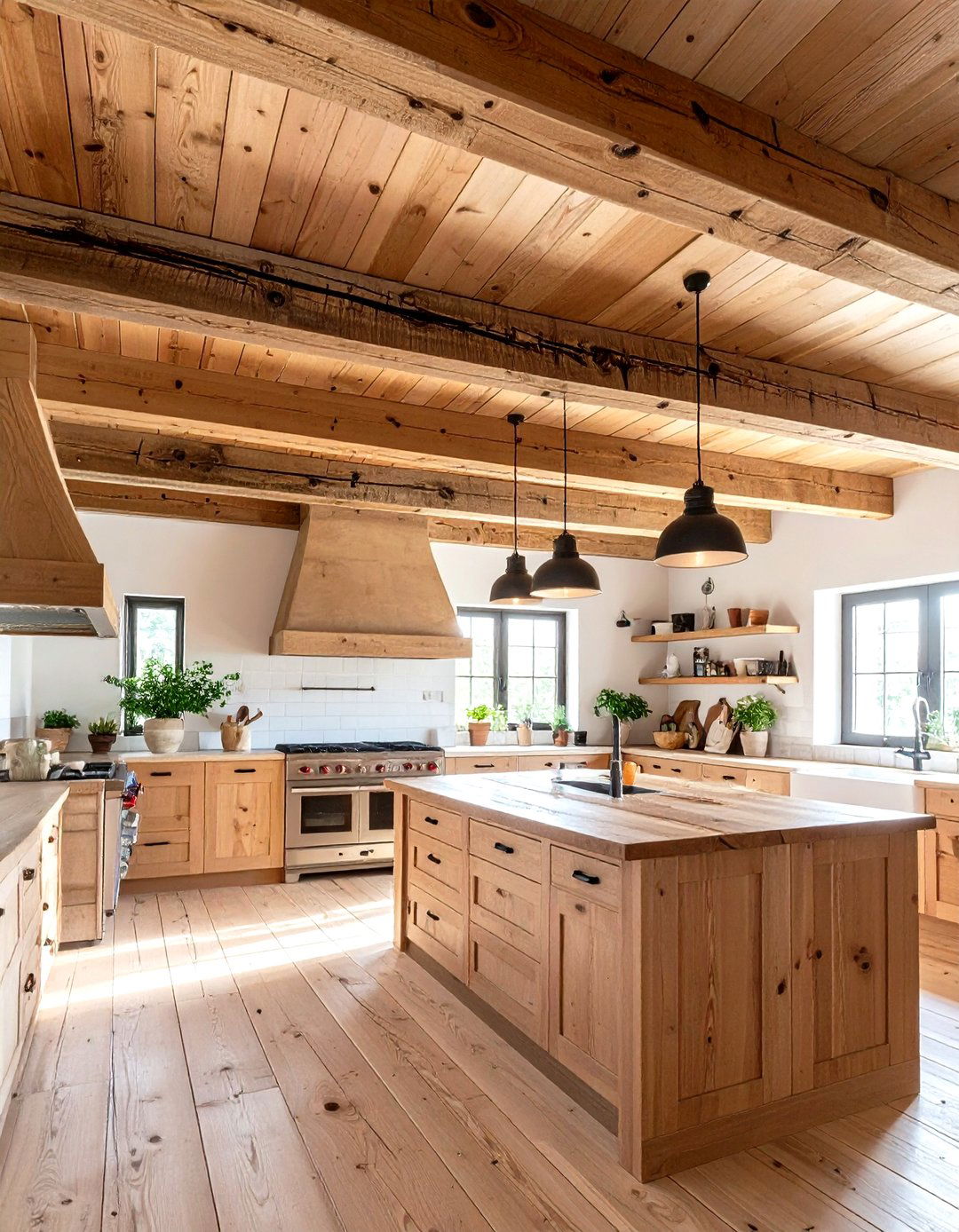
Exposed wooden ceiling beams instantly add Spanish architectural character to any kitchen space. These structural elements, whether authentic or decorative, create visual warmth and rustic charm overhead. Choose beams in natural wood tones that complement your cabinetry, or stain them darker for dramatic contrast against white or cream ceilings. Rough-hewn timbers provide the most authentic Spanish feel, while smooth-finished beams offer a more refined interpretation. The vertical lines draw the eye upward, making kitchens feel more spacious and grand. Incorporate wrought iron hardware or decorative brackets to enhance the Spanish aesthetic. These beams also provide practical mounting points for pendant lights or hanging pot racks.
7. Spanish Range Hood with Decorative Plaster Details
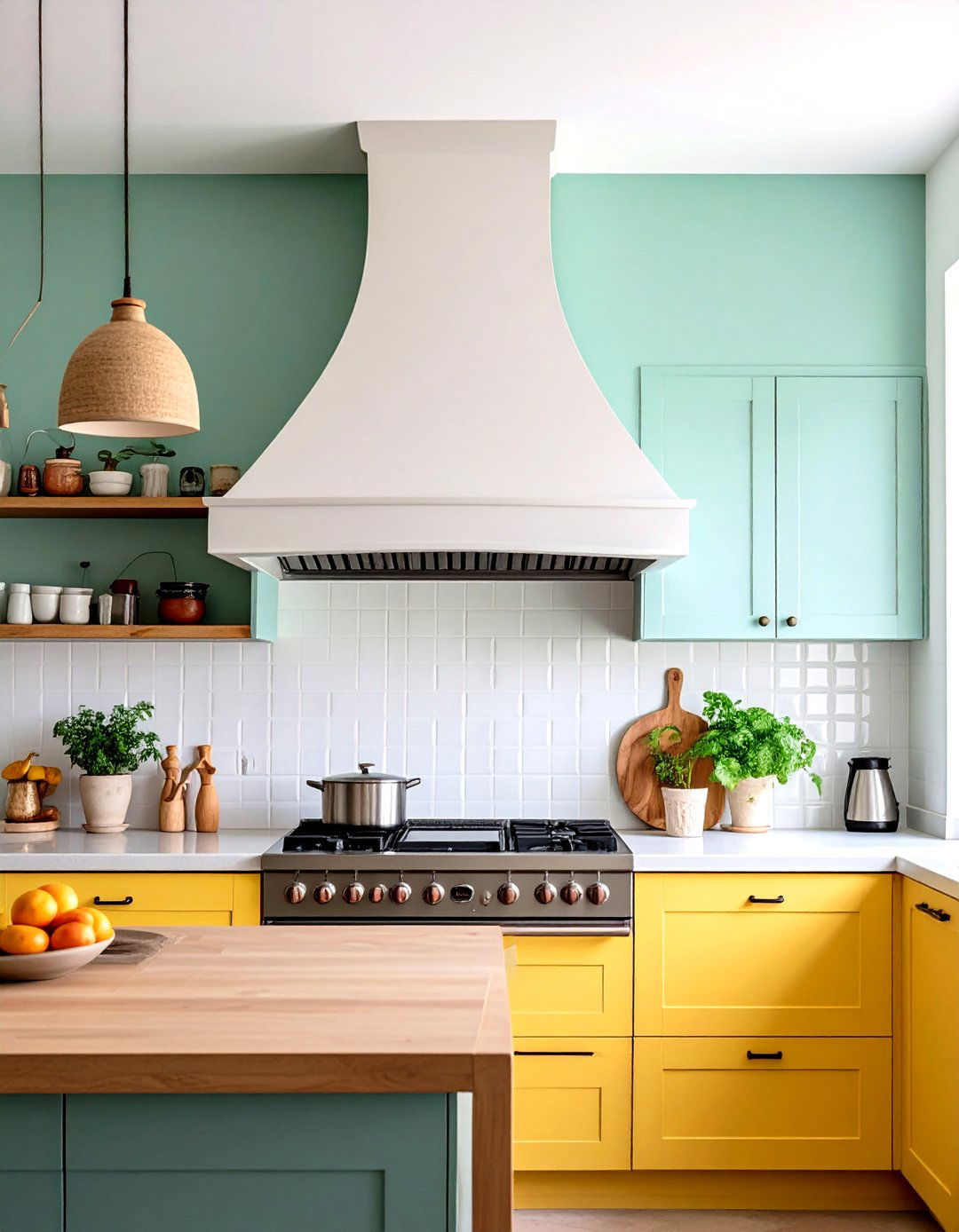
Design a show-stopping range hood that becomes the kitchen's architectural centerpiece through decorative plaster work and Spanish-inspired curves. These custom hoods often feature flared or curved silhouettes that echo Spanish mission architecture. Finish with lime plaster, venetian plaster, or textured paint in warm, earthy tones that complement your overall color scheme. Incorporate niche shelving or decorative corbels for added visual interest and functionality. The hood's substantial presence anchors the cooking area while providing efficient ventilation. Consider adding wrought iron details or hand-painted accents to enhance the Spanish character. A well-designed hood unifies the kitchen's aesthetic while serving as a conversation starter for guests.
8. Open Shelving with Rustic Wood Planks
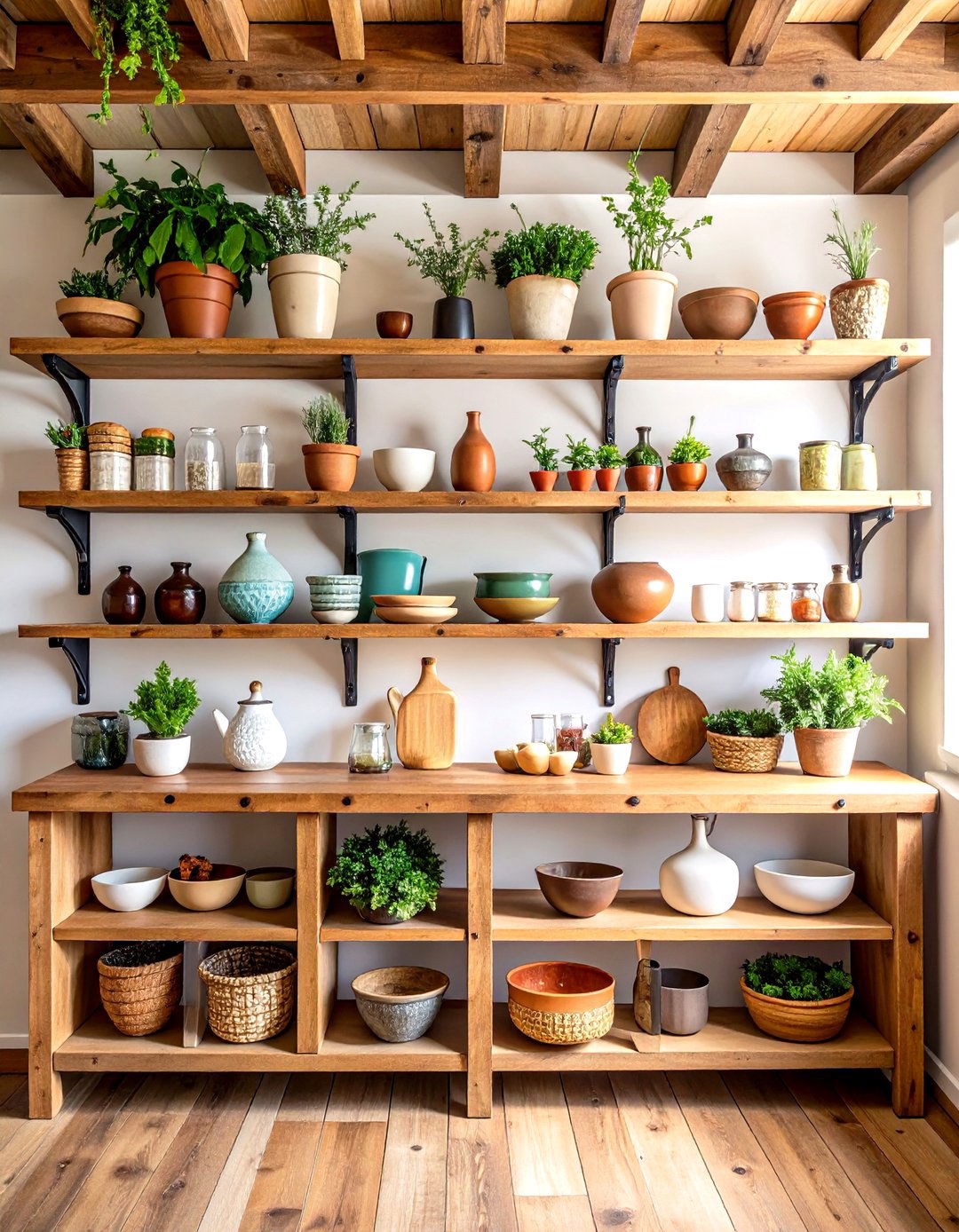
Replace upper cabinets with open shelving constructed from reclaimed or rustic wood planks to showcase your Spanish pottery and glassware. This approach creates an airy, welcoming atmosphere while displaying beautiful dishware as decorative elements. Choose shelving brackets in wrought iron or aged bronze to maintain Spanish authenticity. The open design encourages organization and makes frequently used items easily accessible during cooking. Arrange colorful ceramics, copper pots, and woven baskets to create visual vignettes that change with the seasons. How would displaying your favorite Spanish-inspired serving pieces enhance your kitchen's personality? The rustic wood adds warmth and texture while celebrating the handcrafted aesthetic central to Spanish design.
9. Arched Doorway Transitions Between Spaces
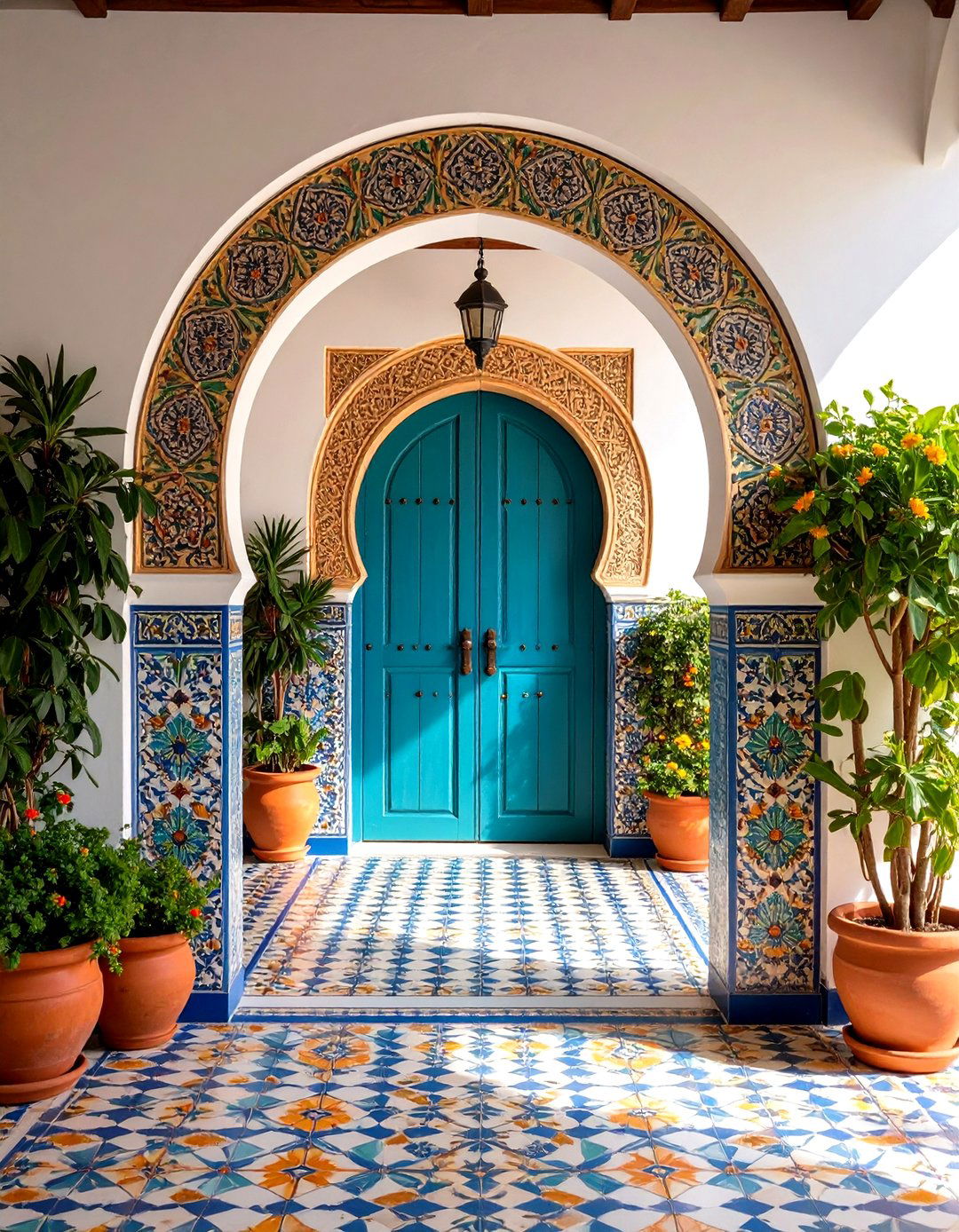
Create seamless flow between your kitchen and adjacent rooms with graceful arched doorways that embody Spanish architectural tradition. These curved openings soften the transition between spaces while maintaining visual connectivity in open floor plans. Frame arches with natural stone, decorative tile, or painted plaster to enhance their prominence. The rounded shape contrasts beautifully with rectangular cabinetry and creates interesting shadow play throughout the day. Consider varying arch sizes to create hierarchy and visual interest in larger kitchens. These doorways naturally guide traffic flow while serving as elegant frames for views into dining rooms or living areas. The timeless appeal of arches ensures your Spanish kitchen will never look dated.
10. Saltillo Tile Flooring with Natural Variations
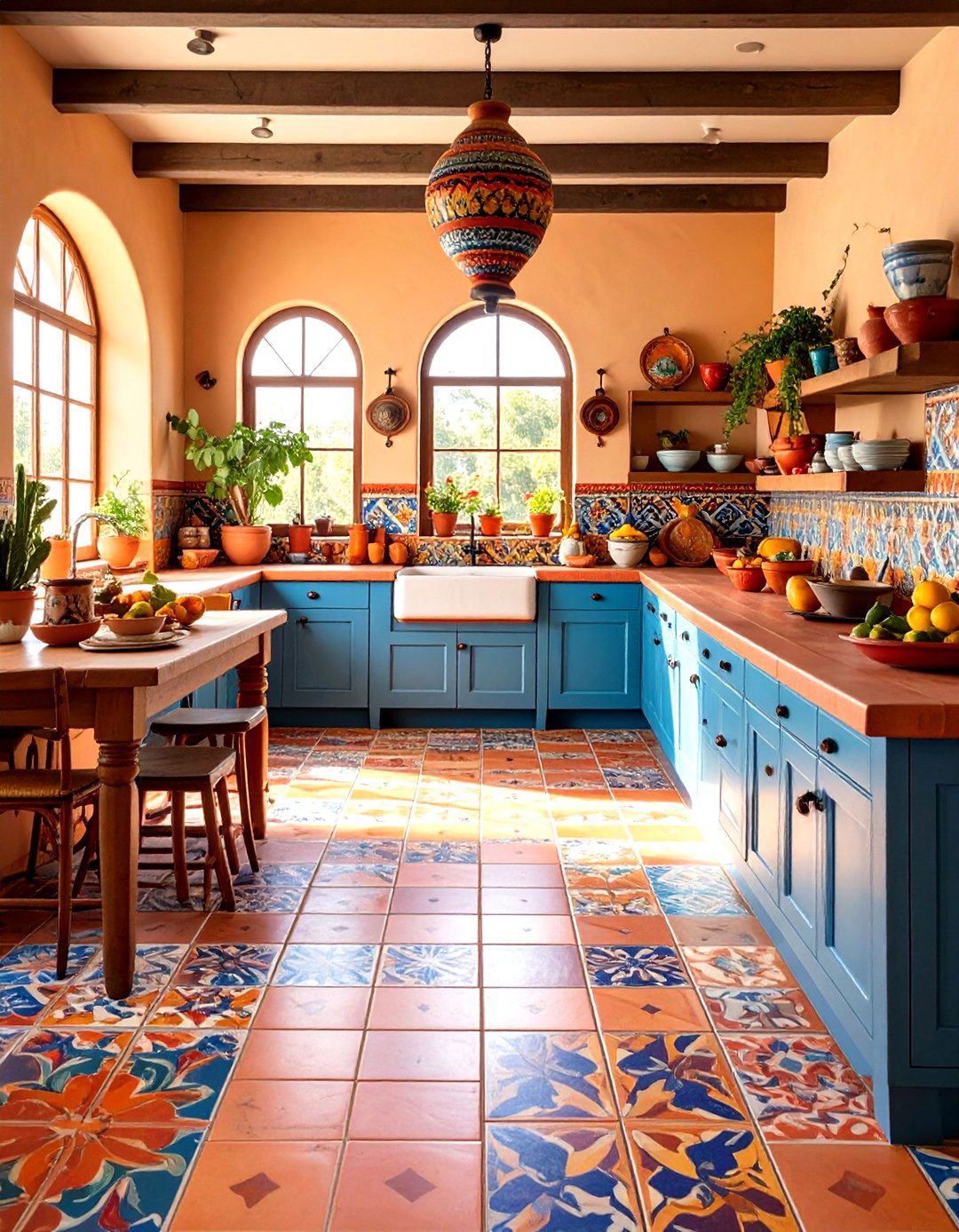
Authentic Saltillo tiles bring earthy Mexican influence to Spanish kitchen design through their handcrafted imperfections and warm terracotta tones. These unglazed clay tiles develop beautiful patina over time, becoming richer and more characterful with age. Each tile displays unique color variations and surface textures that add authentic charm to your flooring. The porous material provides excellent thermal mass, keeping kitchens comfortable in various climates. Seal Saltillo tiles properly to protect against stains while maintaining their natural appearance. Pair with dark wood cabinetry and wrought iron accents for complete Spanish authenticity. The irregular edges and size variations create rustic appeal that machine-made tiles cannot replicate.
11. Spanish Blue and White Tile Patterns
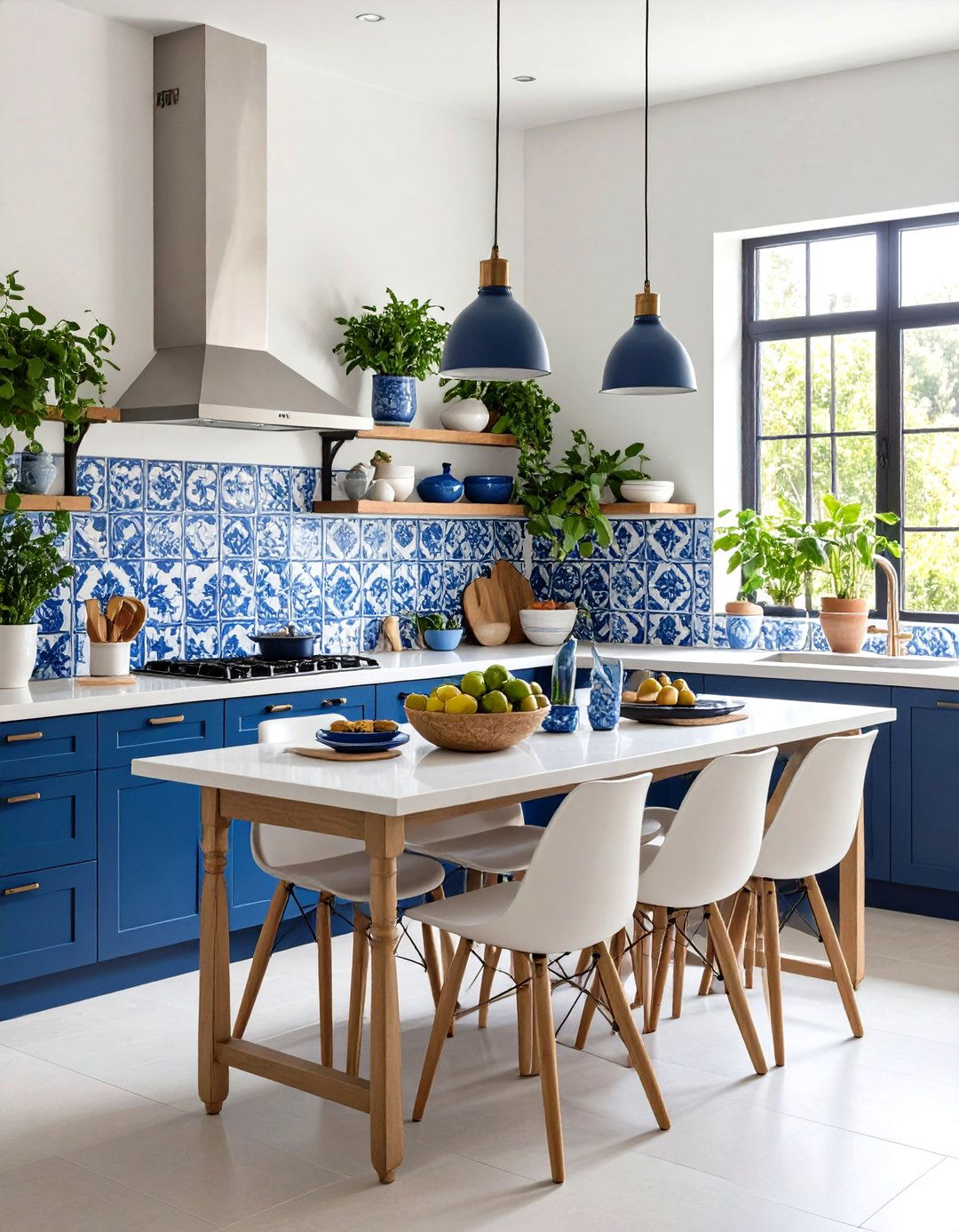
Introduce classic Spanish ceramic tradition with blue and white tile patterns that evoke Mediterranean coastal charm. These timeless color combinations work beautifully as backsplashes, accent walls, or decorative borders throughout your kitchen. Traditional patterns include geometric motifs, floral designs, and intricate Moorish-influenced layouts that add visual sophistication. The cool blue tones balance warm wood and terracotta elements while creating refreshing contrast. Consider mixing different pattern scales for dynamic visual interest without overwhelming the space. Are you drawn to the serene beauty of blue and white Spanish ceramics? These tiles reflect light beautifully, making kitchens feel brighter and more spacious while maintaining authentic Spanish character.
12. Natural Stone Countertops with Rough Textures
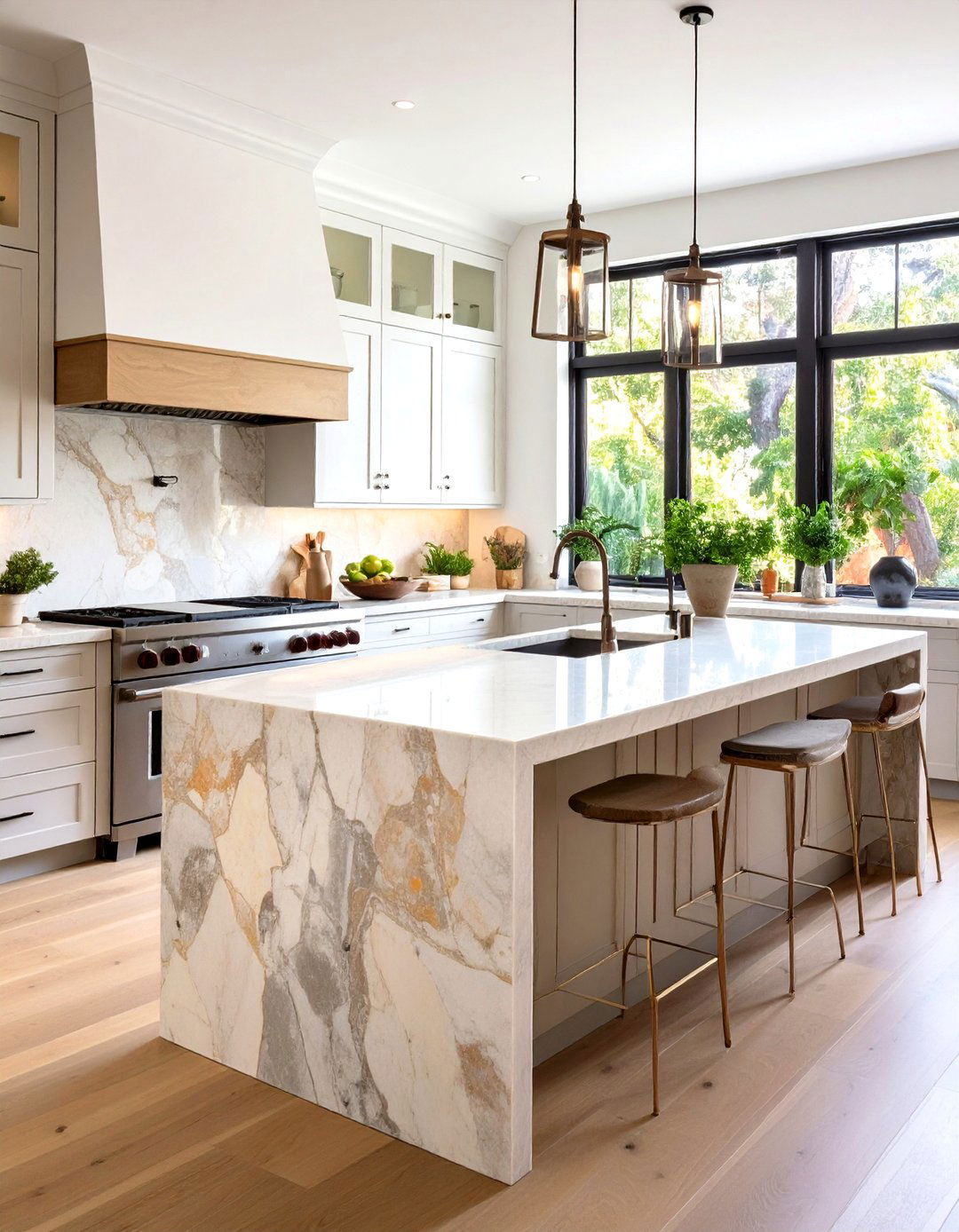
Select natural stone countertops with rough, organic textures that complement Spanish kitchen design's emphasis on authentic materials. Limestone, travertine, or rough-finished granite provides durable work surfaces while adding tactile interest to your kitchen. These stones naturally vary in color and pattern, ensuring each installation is unique. The matte or honed finishes resist showing fingerprints and water spots better than polished surfaces. Pair natural stone with warm wood cabinetry and wrought iron hardware for cohesive Spanish styling. The substantial thickness and weight of natural stone conveys quality and permanence. Consider edge treatments that enhance the rustic character, such as chiseled or naturally broken edges that appear hand-hewn.
13. Wrought Iron Hardware and Cabinet Pulls
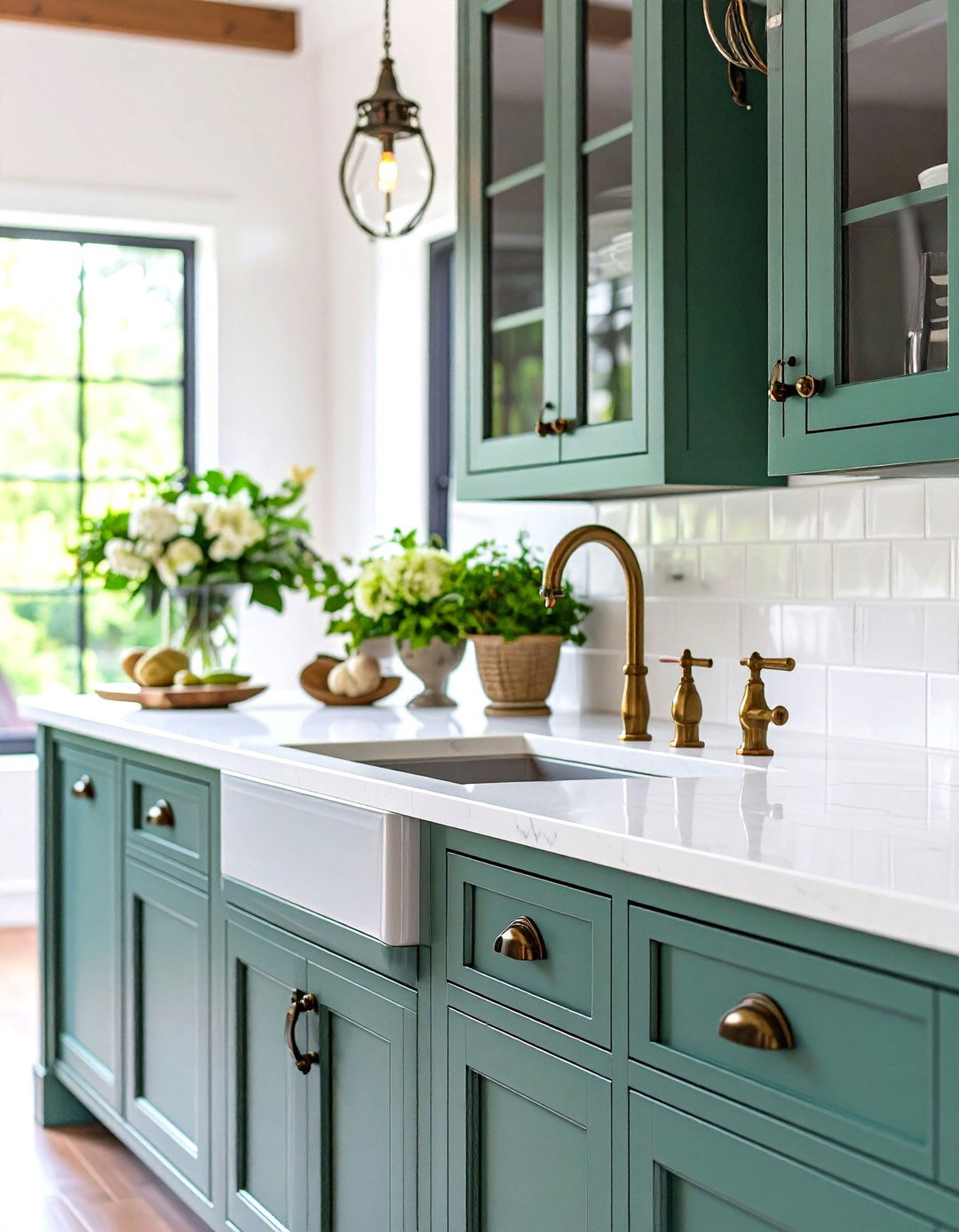
Transform ordinary cabinetry with authentic wrought iron hardware featuring traditional Spanish motifs like fleur-de-lis, twisted rope, or hammered textures. These hand-forged pieces add artistic detail to every cabinet door and drawer while maintaining functional durability. The dark metal finish contrasts beautifully with light-colored wood or painted cabinetry, creating visual definition throughout your kitchen. Choose consistent designs across all hardware for cohesive styling, or mix complementary patterns for varied interest. The substantial weight and quality of wrought iron hardware conveys authentic craftsmanship. How would hand-forged iron details enhance your kitchen's Spanish character? These pieces develop natural patina over time, becoming even more beautiful with age and use.
14. Spanish Pendant Light Clusters
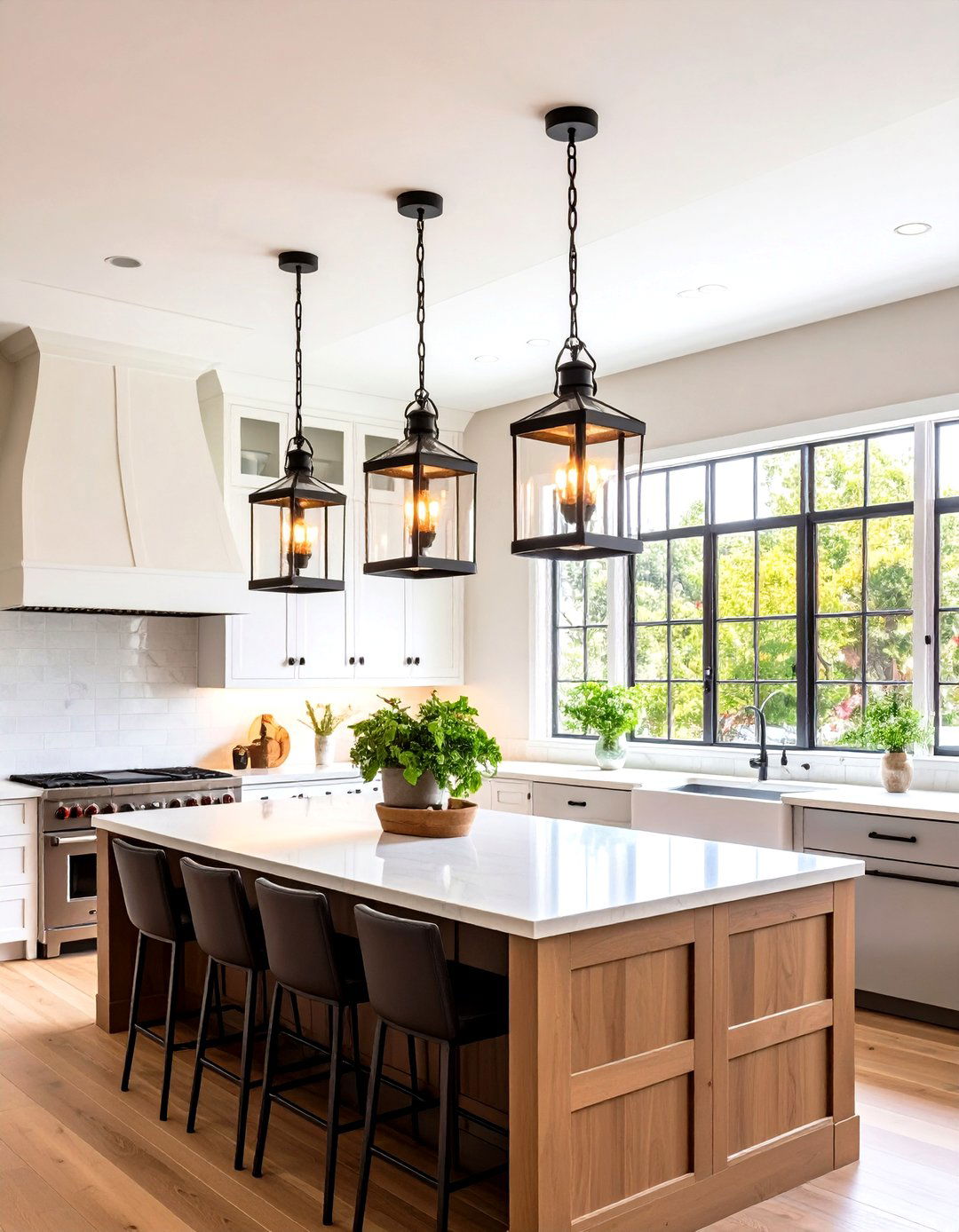
Create intimate lighting zones with clustered Spanish-style pendant lights that provide focused illumination while adding decorative appeal. These fixtures often feature wrought iron construction, glass shades, or ceramic elements that echo Spanish ceramic traditions. Hang multiple pendants at varying heights over kitchen islands or dining areas for dynamic visual interest. The warm light filters through decorative elements, creating appealing shadow patterns on surrounding surfaces. Choose fixtures with adjustable heights to accommodate different activities and preferences. The smaller scale of pendant lights allows for more flexibility than large chandeliers while maintaining Spanish authenticity. Consider dimmer controls to adjust ambiance for different occasions and times of day.
15. Mediterranean Color Palette with Warm Yellows
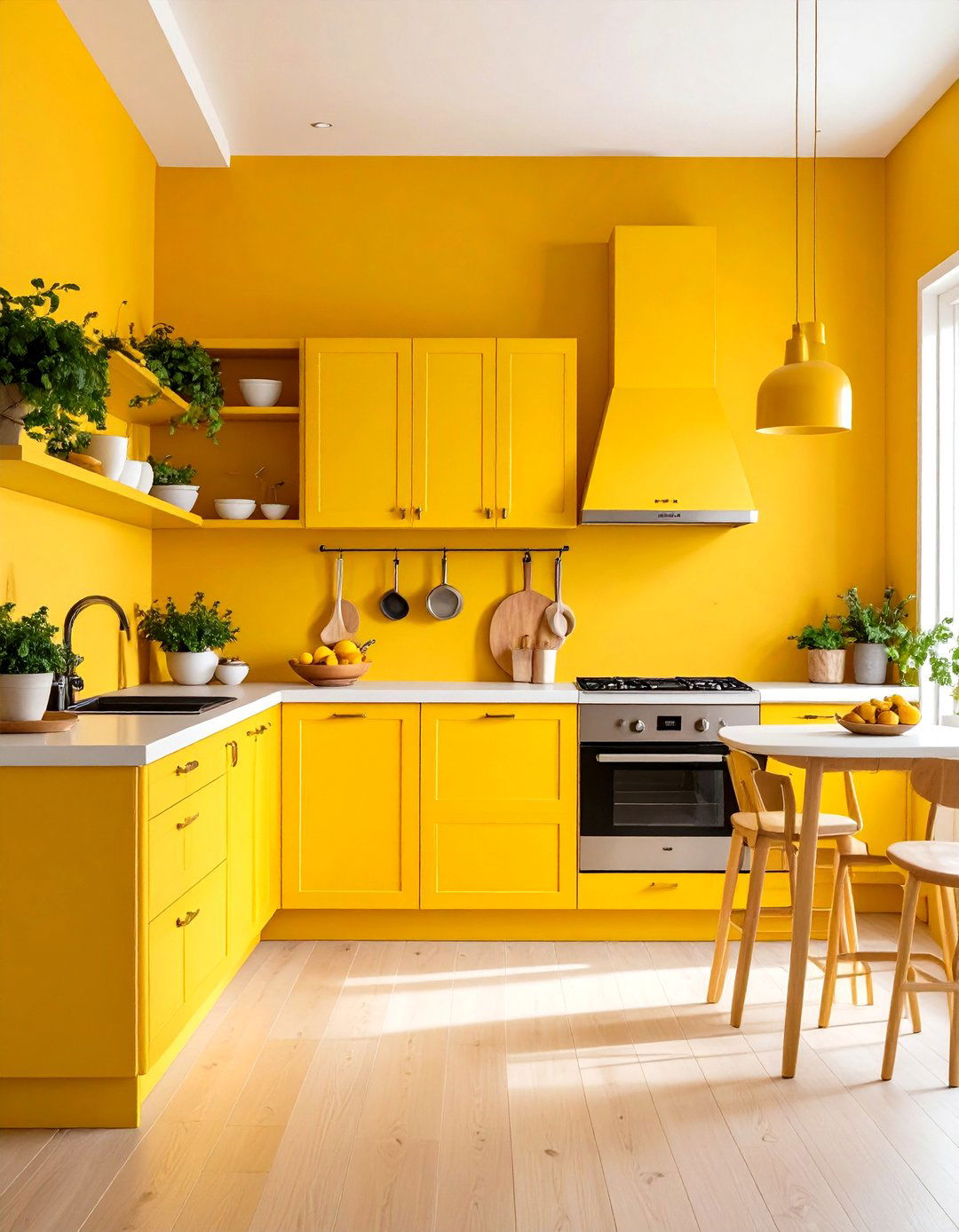
Embrace the sun-soaked warmth of Mediterranean Spain through carefully chosen yellow and gold paint colors that brighten your entire kitchen. These warm hues range from pale cream to rich saffron, creating cheerful backdrops for dark wood cabinetry and colorful tile accents. Yellow walls reflect natural light beautifully, making kitchens feel larger and more welcoming throughout the day. Pair warm yellows with white trim and natural wood elements for balanced contrast. The color psychology of yellow promotes happiness and social interaction, making your kitchen a natural gathering place. Would warm yellow walls make your morning coffee routine more enjoyable? These timeless colors work well with both traditional and contemporary Spanish interpretations.
16. Talavera Pottery Display Areas
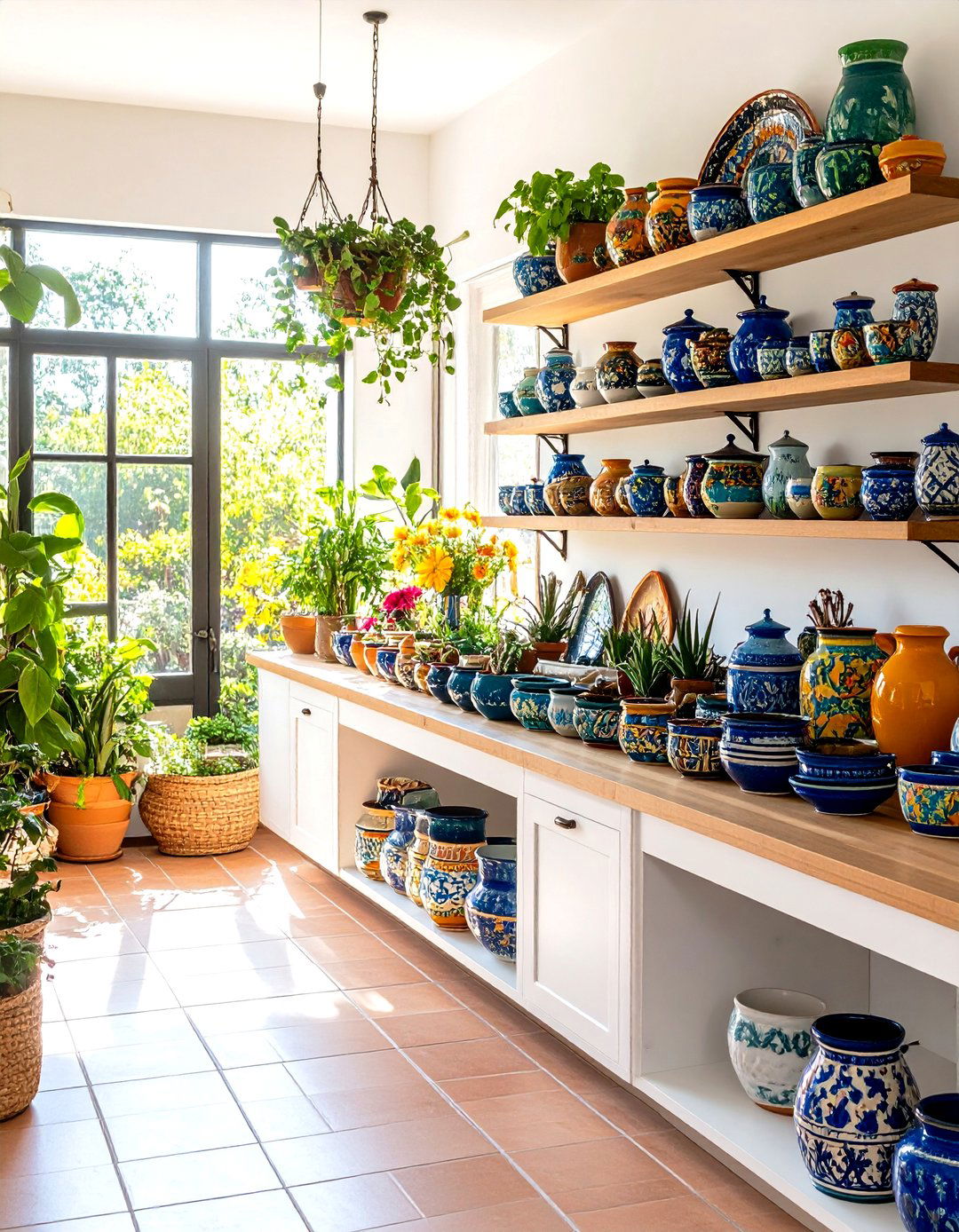
Dedicate specific areas for displaying beautiful Talavera pottery that celebrates Mexican ceramic artistry within your Spanish kitchen design. These hand-painted pieces feature vibrant colors and intricate patterns that serve as functional art throughout your space. Install floating shelves, glass-front cabinets, or wall niches specifically designed to showcase these treasured pieces. The bright colors and bold patterns add personality while connecting your kitchen to Spanish colonial traditions. Mix serving pieces with decorative objects for varied visual interest and scale. The handcrafted nature of Talavera pottery adds authentic cultural richness to your design. Consider rotating displays seasonally to keep your kitchen's personality fresh and engaging while protecting valuable pieces from daily cooking activities.
17. Mosaic Tile Accent Walls
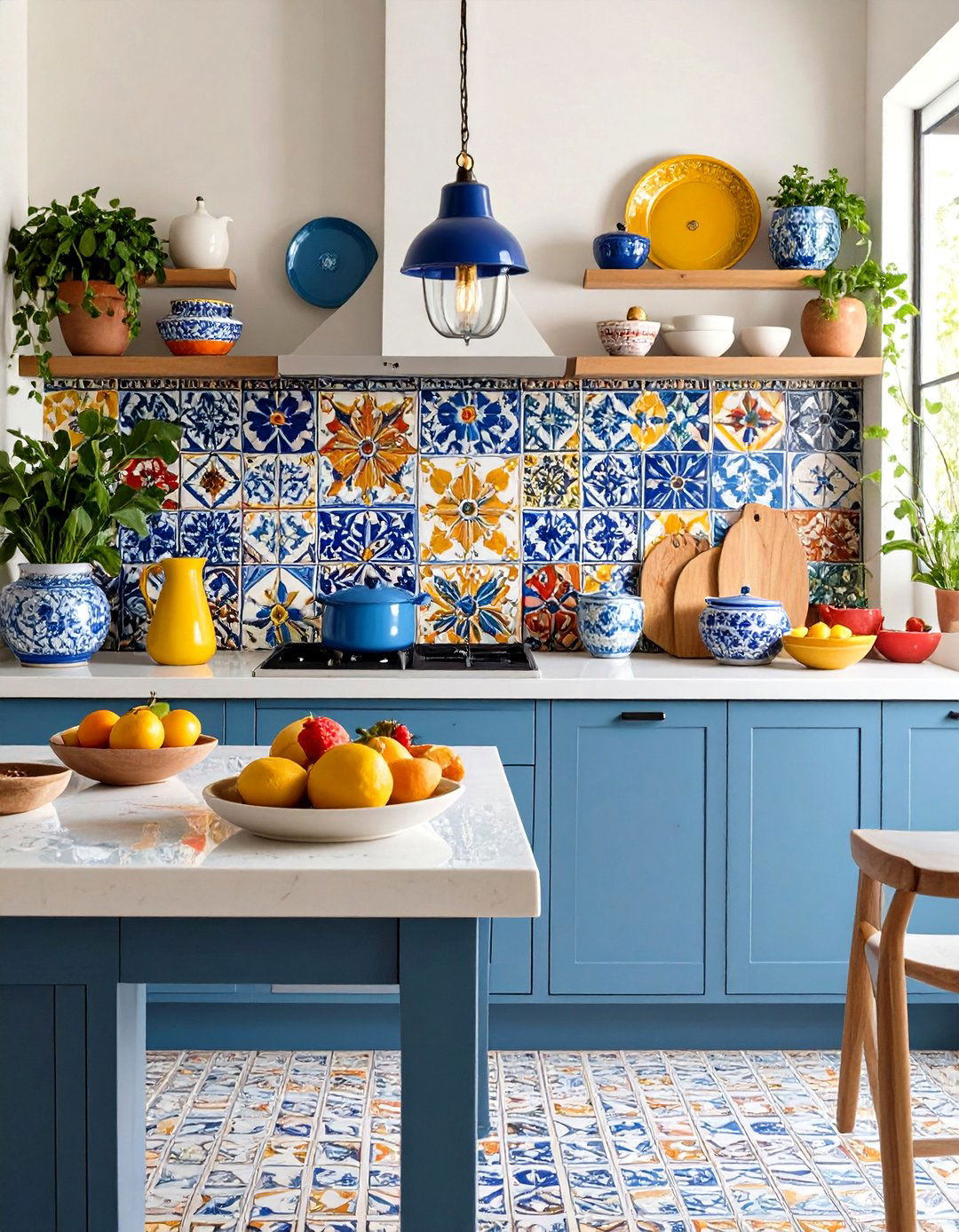
Create stunning focal points with mosaic tile accent walls that showcase Spanish artistic traditions through intricate patterns and rich colors. These detailed installations work beautifully behind stoves, sinks, or as feature walls in breakfast nooks. Mix glass, ceramic, and stone pieces for varied texture and light reflection throughout your space. Traditional Spanish motifs include geometric patterns, floral designs, and Moorish-influenced layouts that add sophisticated visual interest. The smaller tile pieces allow for curved installations and custom patterns impossible with larger formats. Consider hiring skilled artisans to create one-of-a-kind installations that become conversation pieces. The time investment in mosaic work creates heirloom-quality features that increase your home's value while celebrating Spanish craftsmanship.
18. Barrel Vaulted Ceiling Treatments
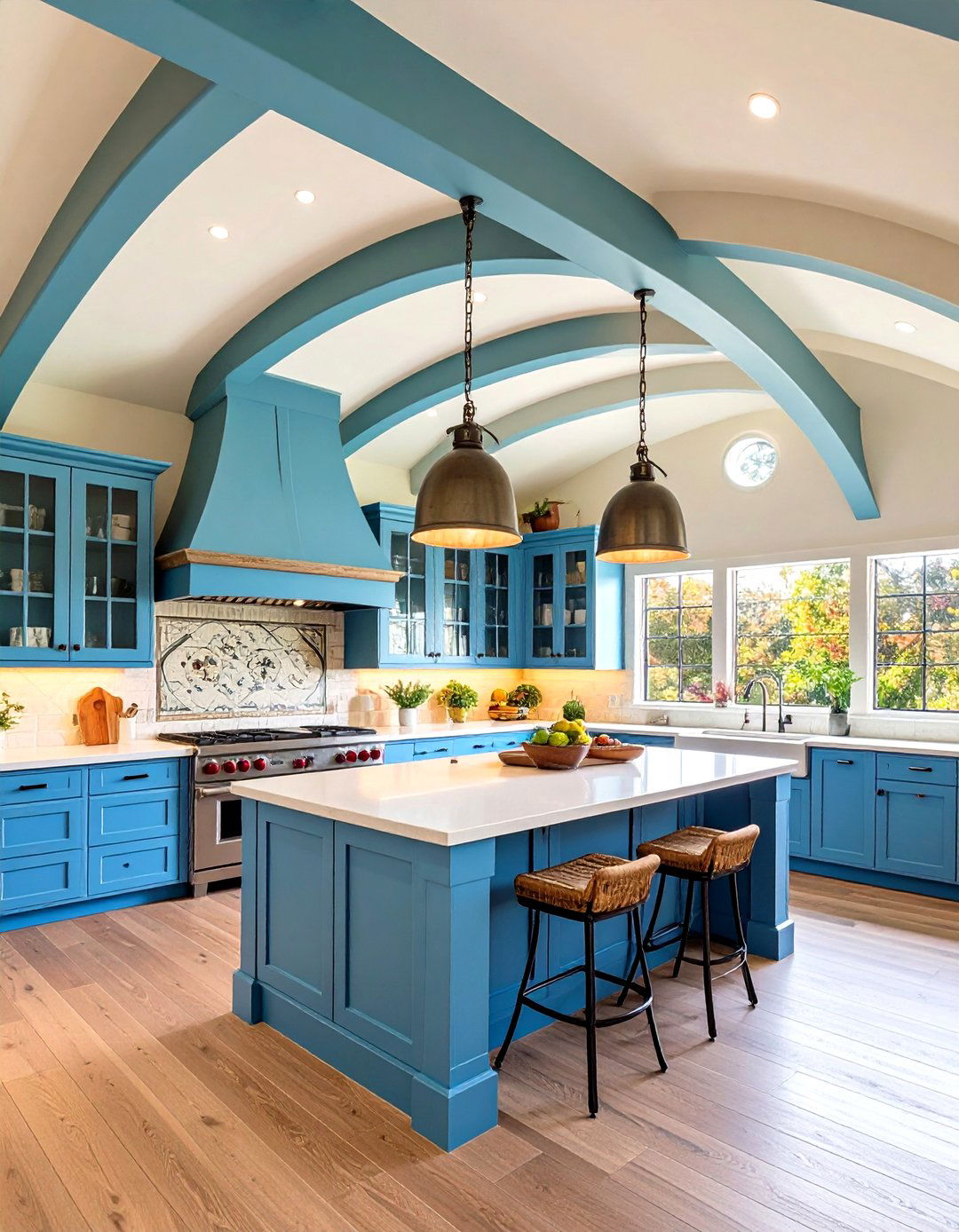
Transform your kitchen with dramatic barrel vaulted ceilings that echo Spanish mission and monastery architecture. These curved ceiling treatments create grand, cathedral-like spaces that make kitchens feel more spacious and impressive. Line vaults with hand-painted tiles, natural stone, or textured plaster for authentic Spanish character. The curved surfaces create interesting acoustics and lighting effects throughout the day. Incorporate recessed lighting or pendant fixtures that work harmoniously with the vault's curves. These architectural features work particularly well in kitchens with central islands where the vault can span the full length. The dramatic scale requires careful proportion with other design elements to maintain balance and functionality.
19. Spanish Revival Range Surrounds
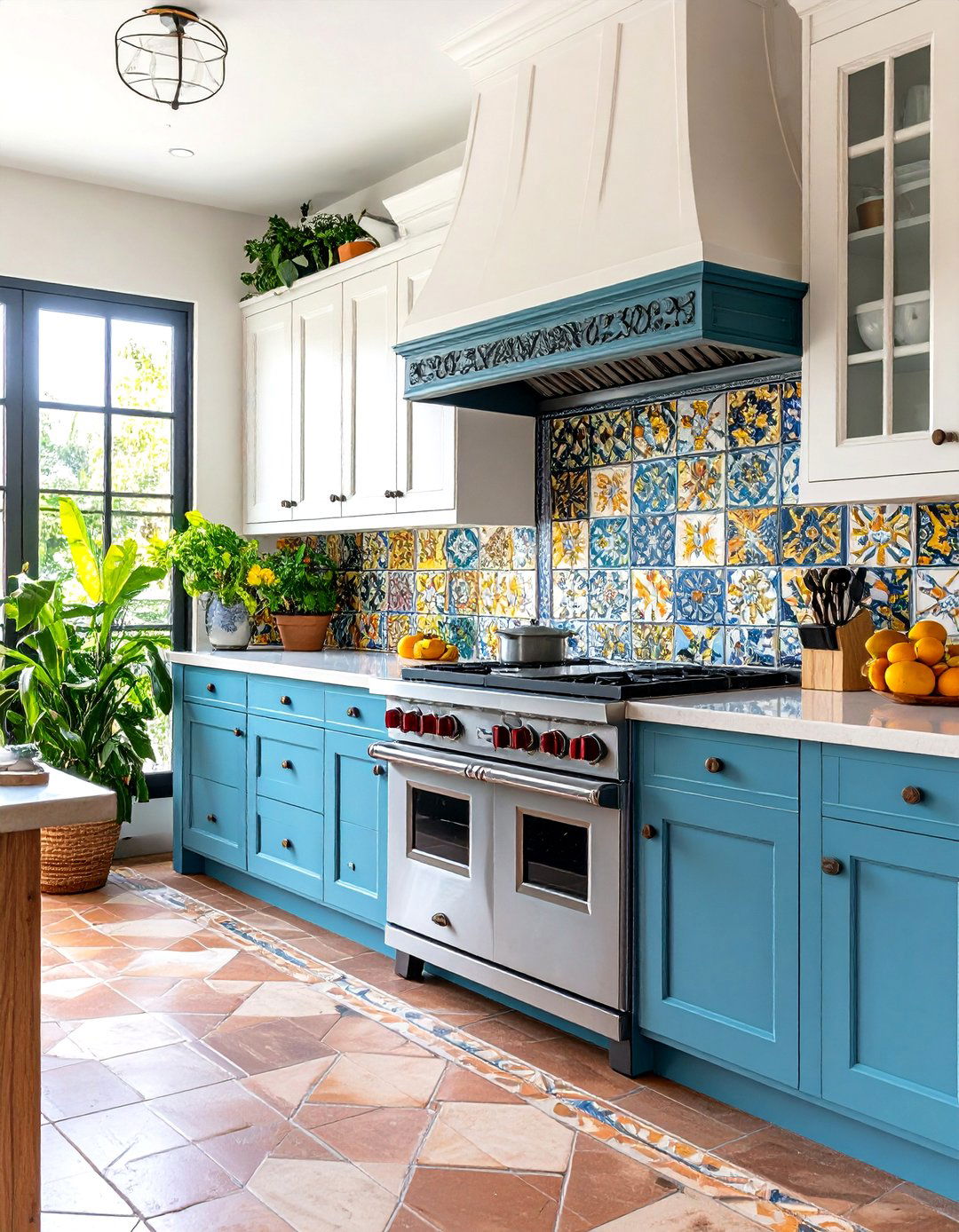
Frame your cooking area with elaborate Spanish Revival range surrounds that incorporate multiple traditional elements into cohesive designs. These installations might include decorative tile work, carved stone details, wrought iron accents, and architectural moldings that create impressive focal points. The surround extends beyond basic backsplash requirements to encompass the entire cooking zone in Spanish architectural tradition. Consider incorporating niche storage, display areas, or built-in spice racks within the surround design. The substantial scale commands attention while providing practical benefits for cooking and entertaining. Would an elaborate range surround make cooking feel more like an art form? These custom installations require careful planning but create lasting impressions that define your kitchen's character.
20. Rustic Dining Nook Integration
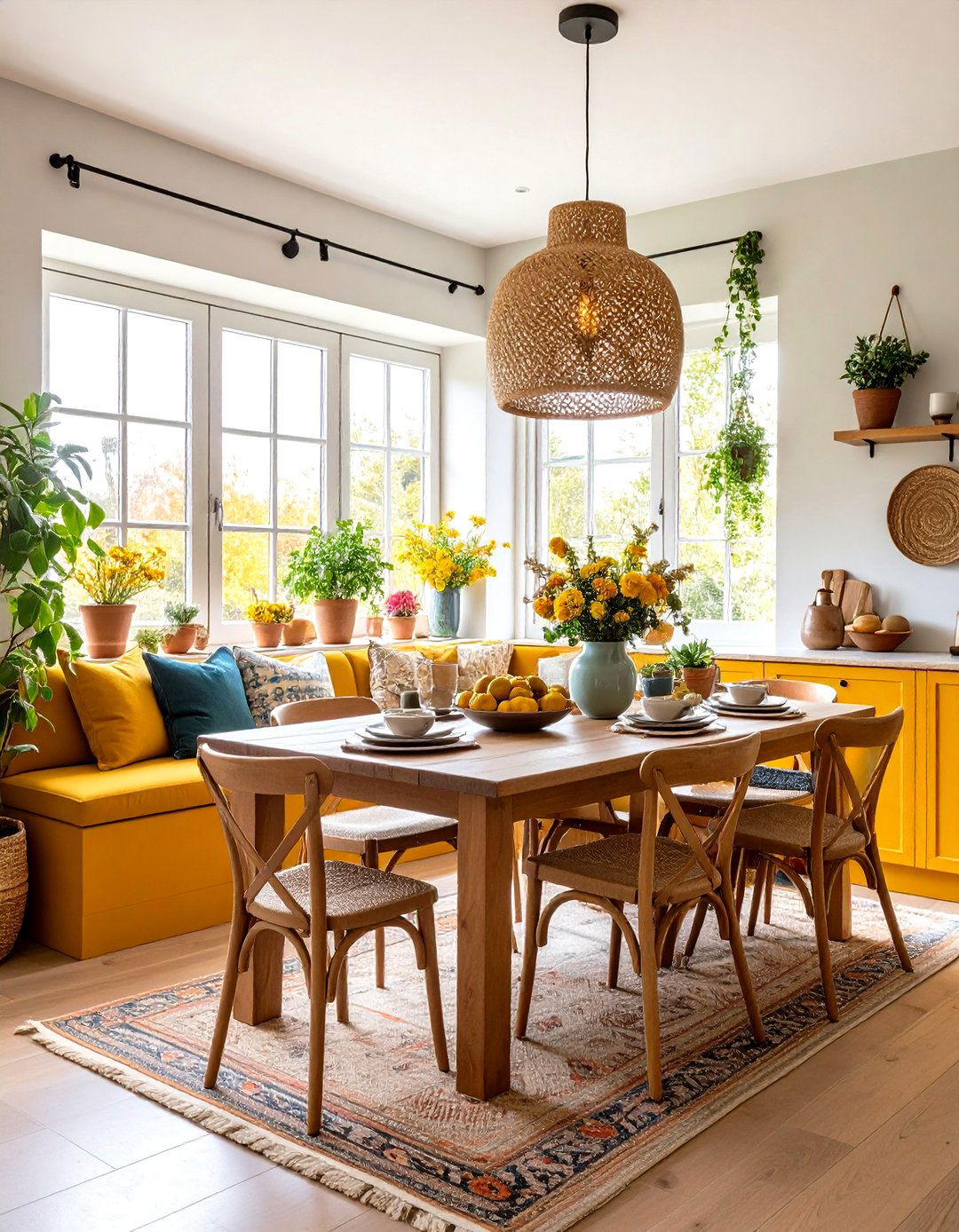
Integrate cozy dining nooks within your Spanish kitchen design using built-in banquettes, rustic tables, and traditional Spanish seating. These intimate spaces encourage family gathering while maximizing space efficiency in smaller kitchens. Choose upholstery in rich jewel tones or natural fabrics that complement your overall color scheme. The close proximity to cooking areas makes serving and cleanup more convenient during daily meals. Incorporate Spanish decorative elements like wrought iron light fixtures, ceramic tile accents, or exposed beam details. The nook creates a casual alternative to formal dining while maintaining Spanish aesthetic consistency. Consider corner locations that take advantage of natural light from multiple windows for the most appealing breakfast spots.
21. Traditional Spanish Ventilation Solutions
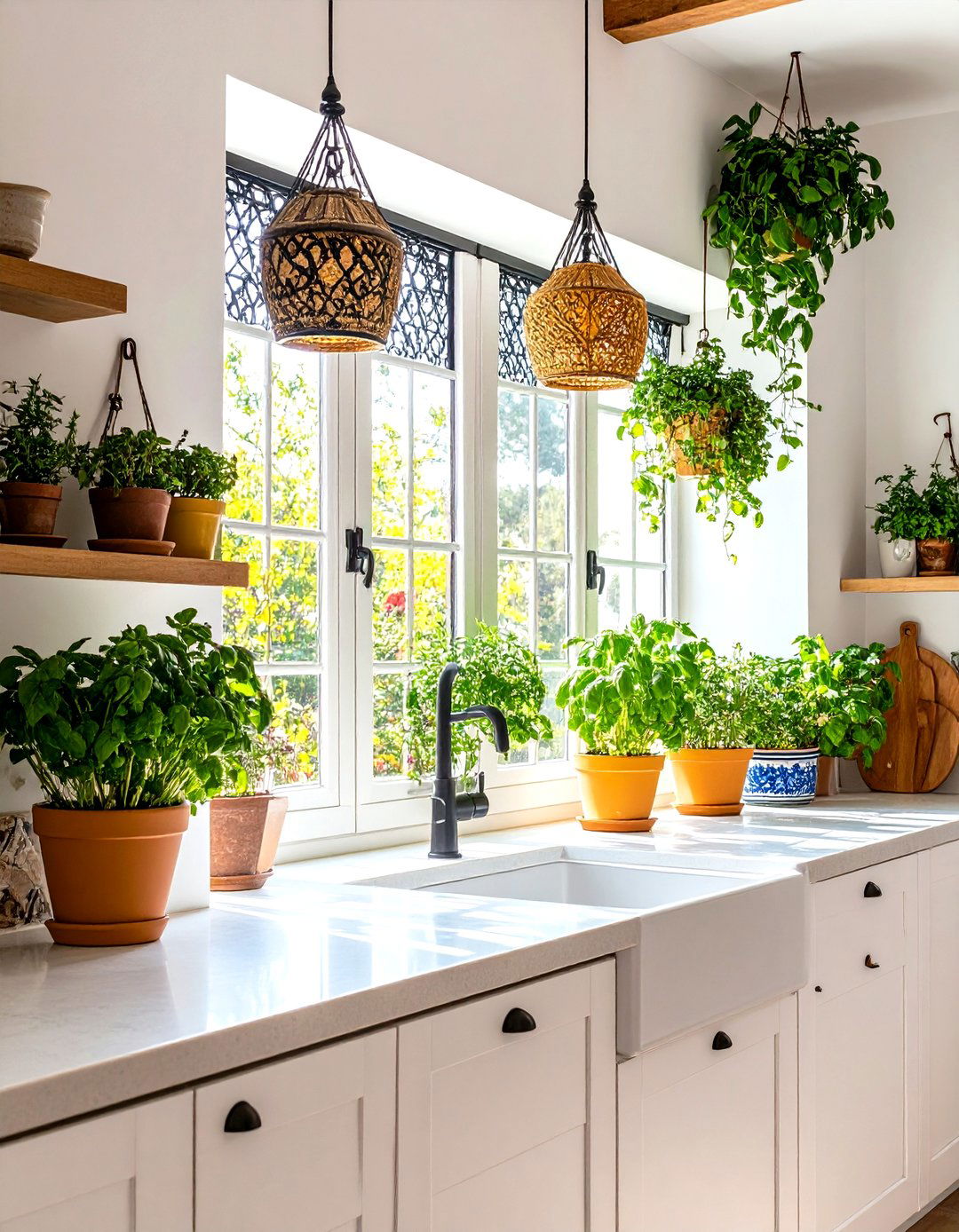
Implement traditional Spanish ventilation solutions that prioritize natural airflow while maintaining authentic architectural character. These might include operable clerestory windows, strategically placed openings, or traditional Spanish grilles that provide cross-ventilation. The climate-conscious design reduces reliance on mechanical systems while creating comfortable cooking environments. Consider incorporating decorative elements like wrought iron grilles or carved wooden shutters that add visual interest while serving functional purposes. These solutions work particularly well in mild climates where natural ventilation can handle most cooling needs. The traditional approach emphasizes sustainability and connection to outdoor environments that characterize Spanish architectural philosophy.
22. Modern Spanish Fusion Elements
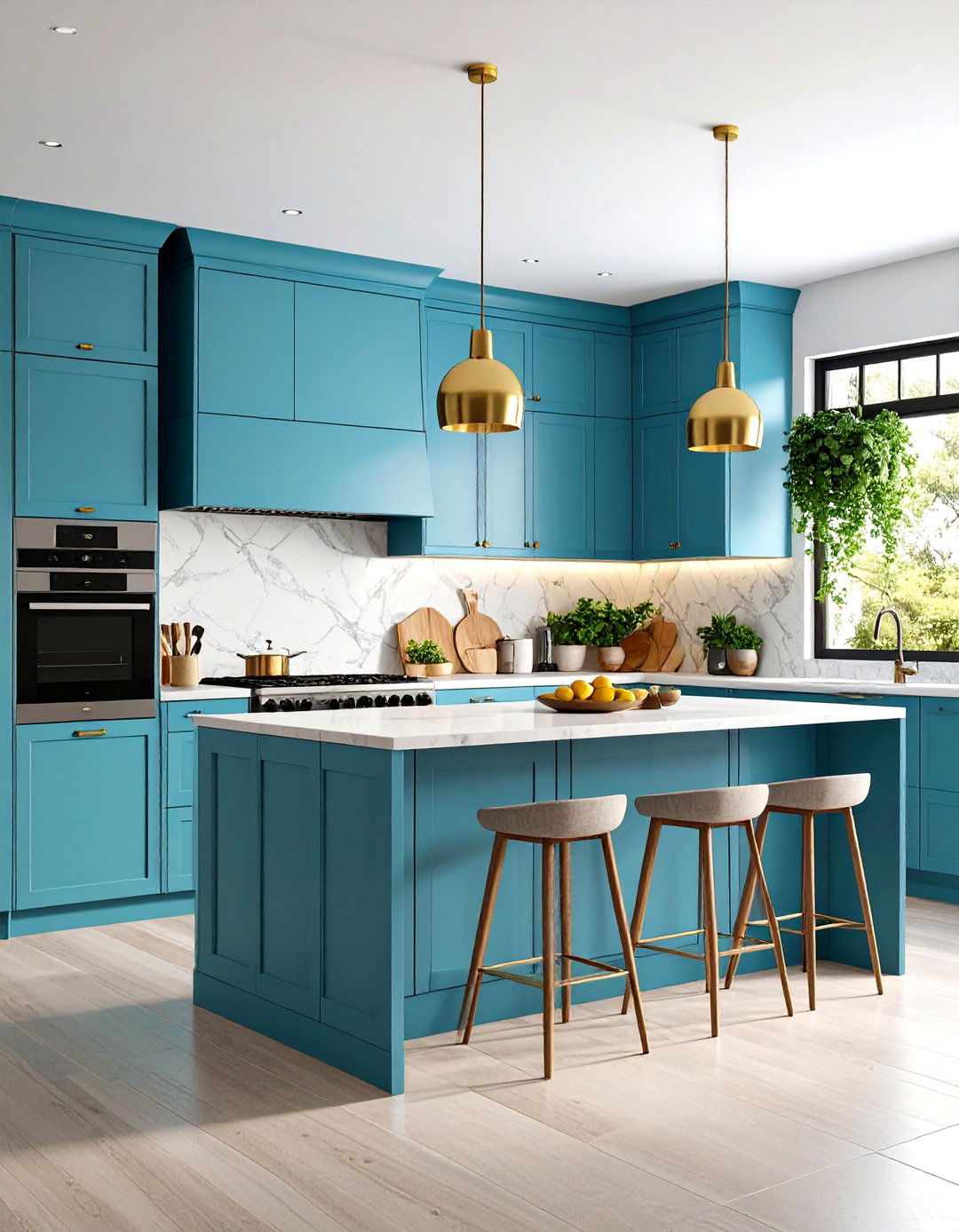
Blend traditional Spanish design elements with contemporary functionality to create kitchens that honor heritage while meeting modern lifestyle demands. This approach might combine sleek stainless steel appliances with hand-painted tiles, or streamlined cabinetry with traditional wrought iron accents. The key lies in maintaining Spanish warmth and character while incorporating current technology and convenience features. Choose one or two traditional elements as focal points while keeping other components more contemporary. The fusion approach allows for easier maintenance and updated functionality without sacrificing cultural authenticity. How would combining old-world charm with modern convenience enhance your daily cooking experience? This balanced approach creates timeless designs that won't feel dated as trends change.
23. Spanish Courtyard Window Treatments
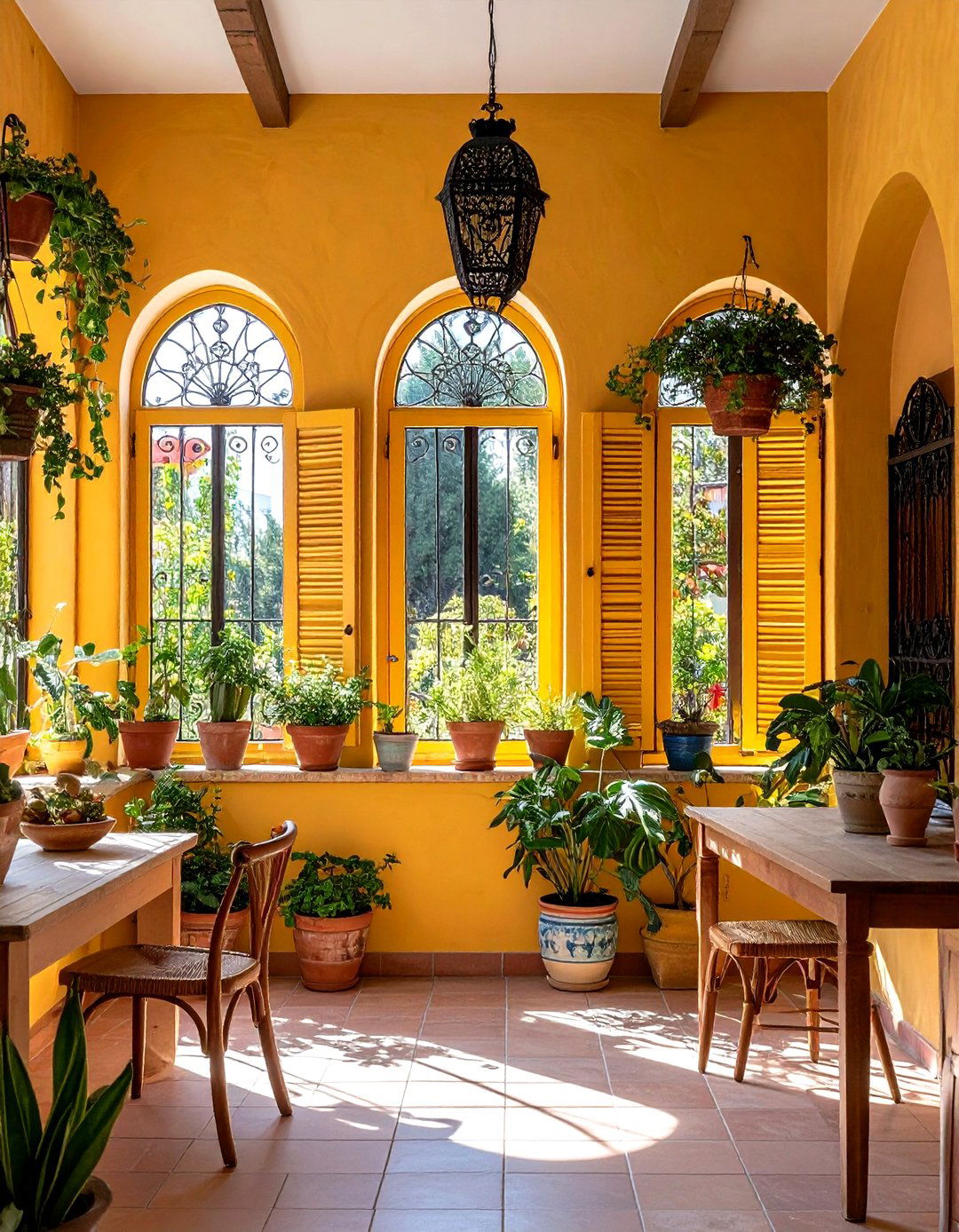
Install window treatments that echo Spanish courtyard design through arched frames, decorative grilles, or shutters that control light while adding architectural interest. These elements connect indoor kitchens to outdoor spaces that characterize Spanish residential design. Consider interior shutters, wrought iron grilles, or fabric panels that complement your overall design aesthetic. The treatments should provide privacy and light control while maintaining views to gardens or outdoor dining areas. Natural materials like wood or iron work best for authentic Spanish character. These elements also provide opportunities to introduce additional color or pattern that enhances your kitchen's personality while serving practical functions throughout the day.
24. Authentic Spanish Material Combinations
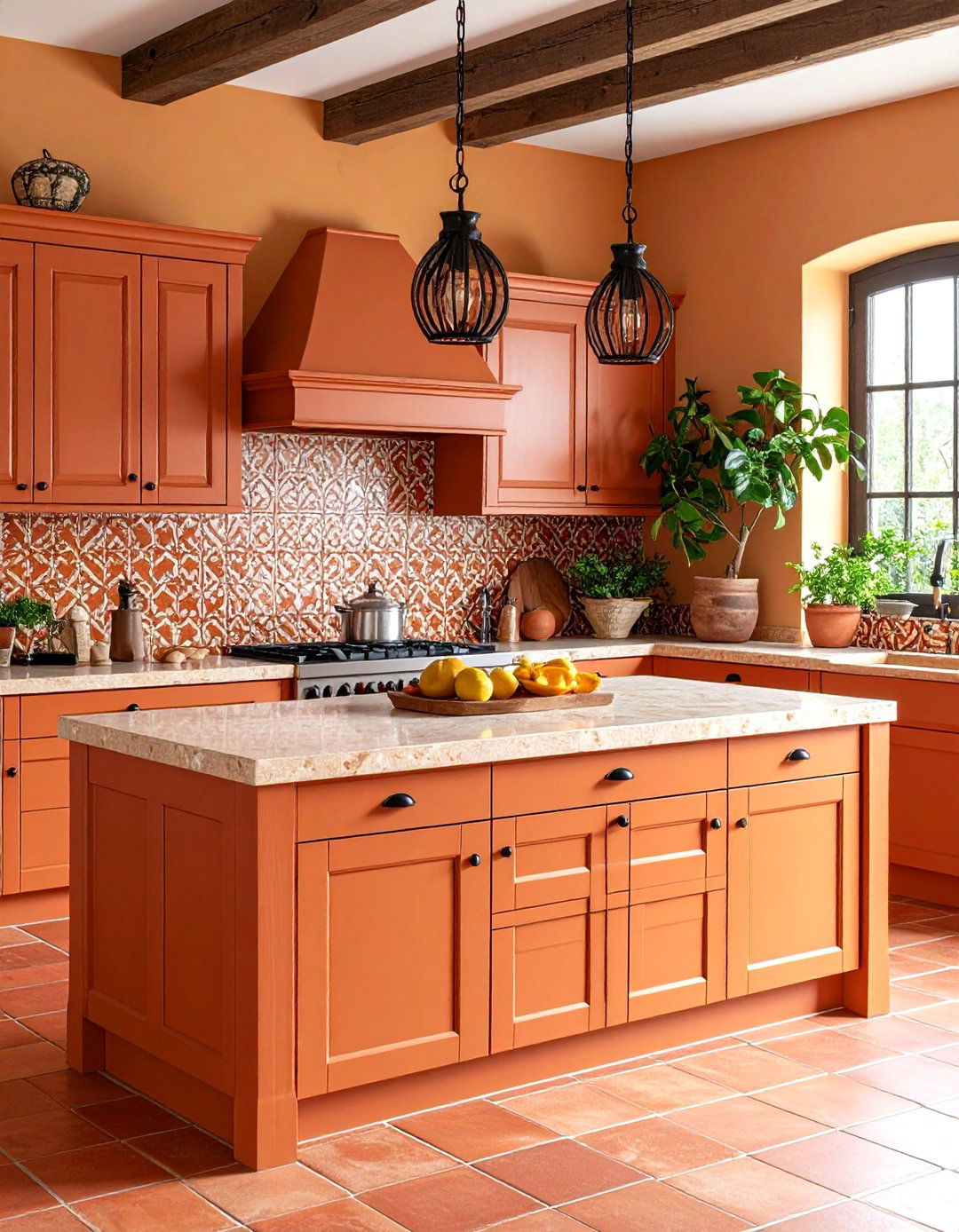
Master the art of combining authentic Spanish materials like clay tiles, natural stone, wrought iron, and solid wood to create cohesive kitchen designs. The key lies in balancing proportions and maintaining consistent color temperatures across all materials. Traditional combinations might include terracotta floors with limestone counters, dark wood cabinetry, and wrought iron accents. Each material should complement others while contributing unique texture and visual interest to the overall composition. Consider the practical requirements of each material in kitchen environments while maintaining aesthetic priorities. The investment in authentic materials creates lasting value and timeless appeal that transcends short-term trends. How would surrounding yourself with natural, handcrafted materials affect your daily cooking experience and overall well-being?
Conclusion:
Spanish kitchen design celebrates the timeless appeal of Mediterranean culture through authentic materials, warm colors, and handcrafted details that create inviting culinary spaces. These design ideas demonstrate how traditional elements like terracotta tiles, wrought iron accents, and exposed wooden beams can transform ordinary kitchens into extraordinary gathering places. Whether you choose dramatic cooking alcoves, hand-painted ceramic backsplashes, or rustic dining nooks, each element contributes to an authentic Spanish aesthetic that honors cultural heritage while meeting modern functionality requirements. The emphasis on natural materials and artisanal craftsmanship ensures these kitchens will remain beautiful and relevant for generations, making them worthwhile investments in both style and lasting value.


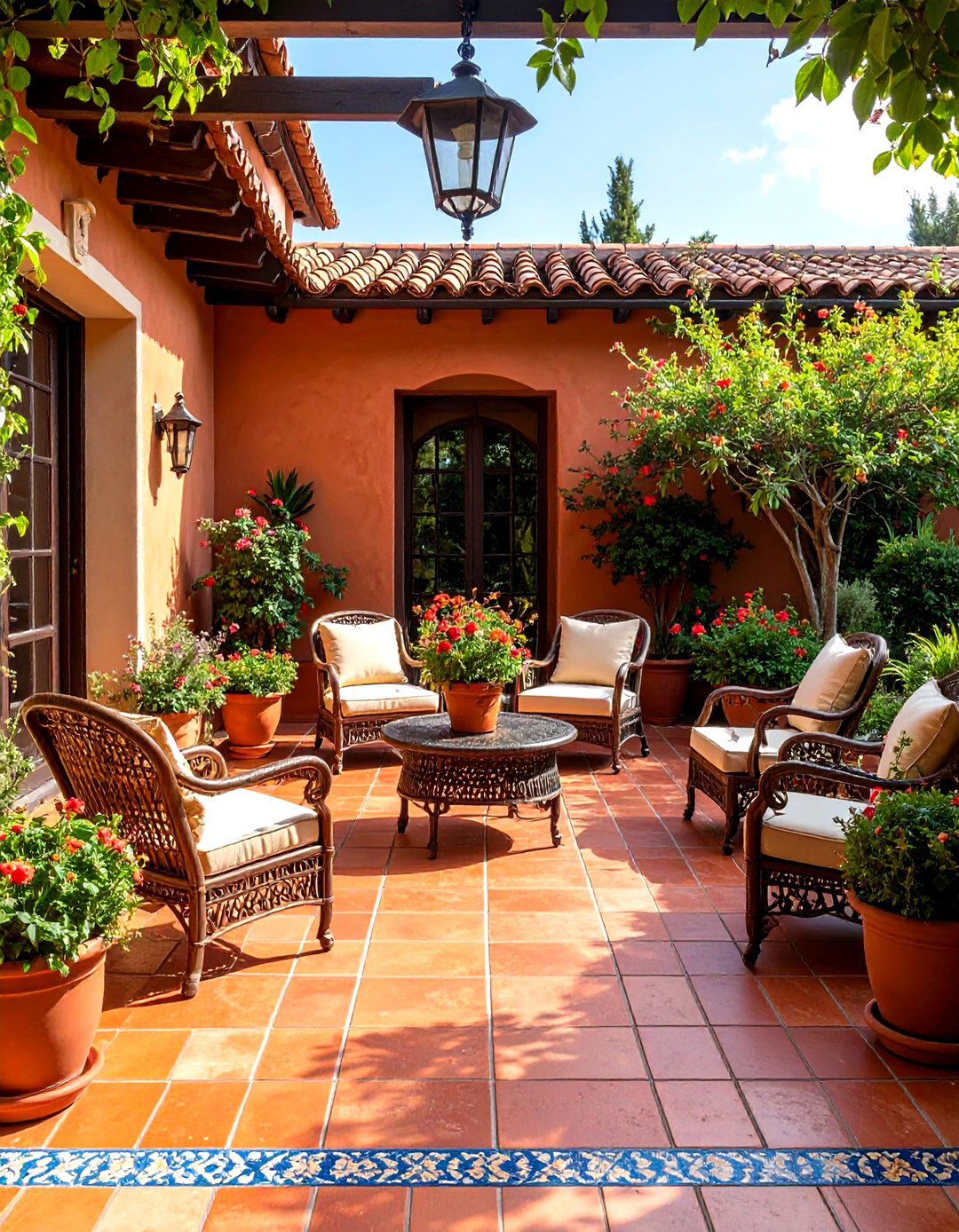
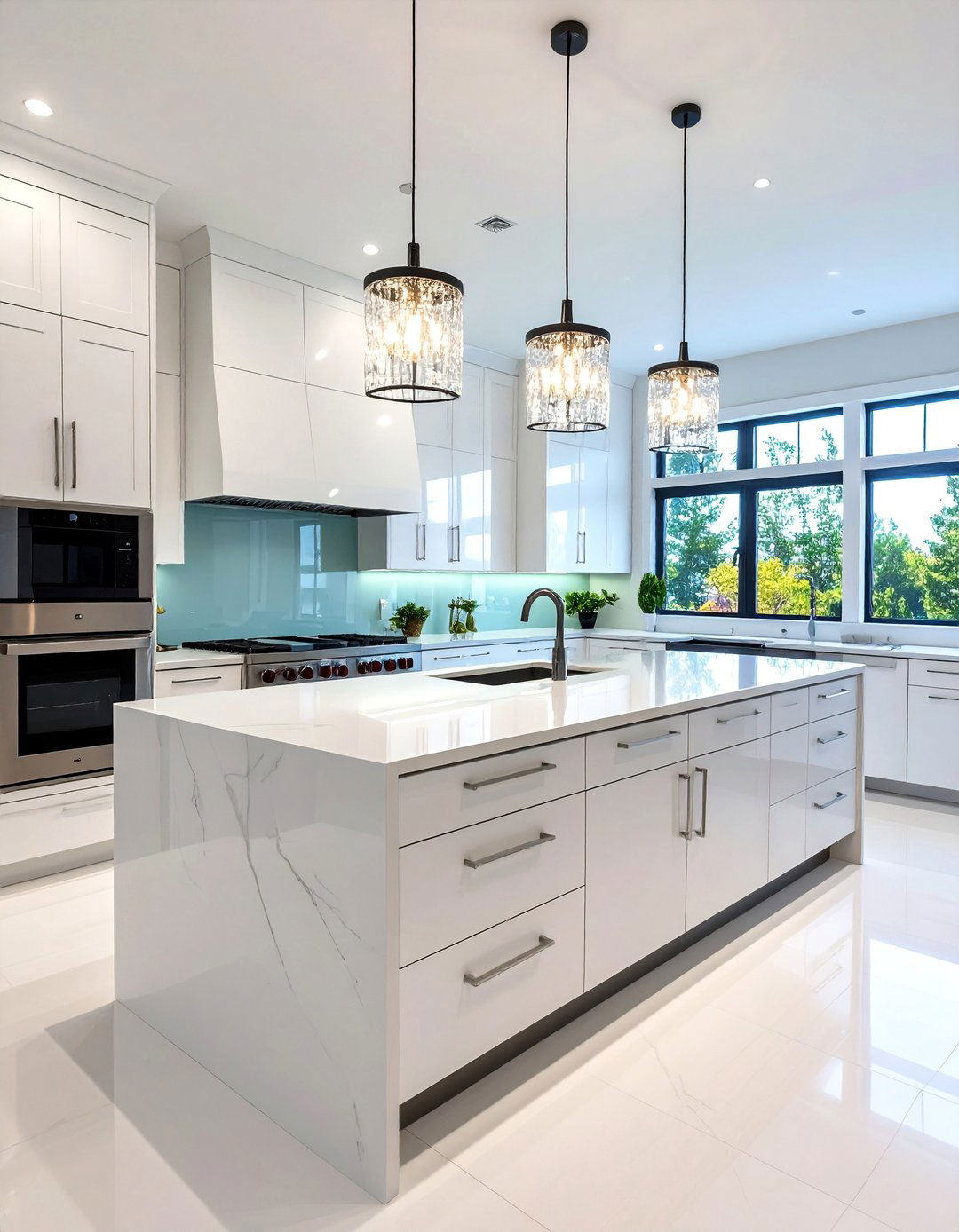

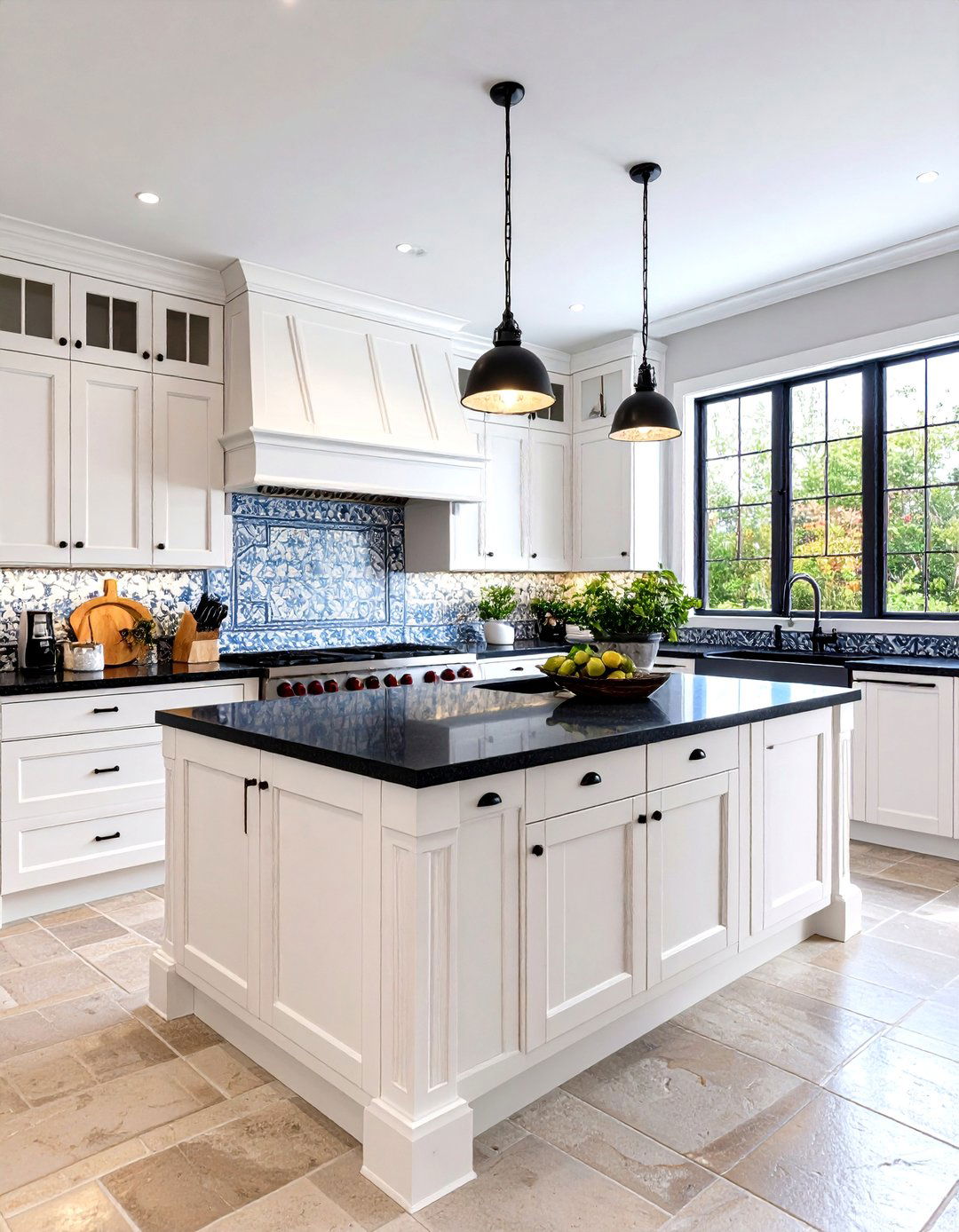
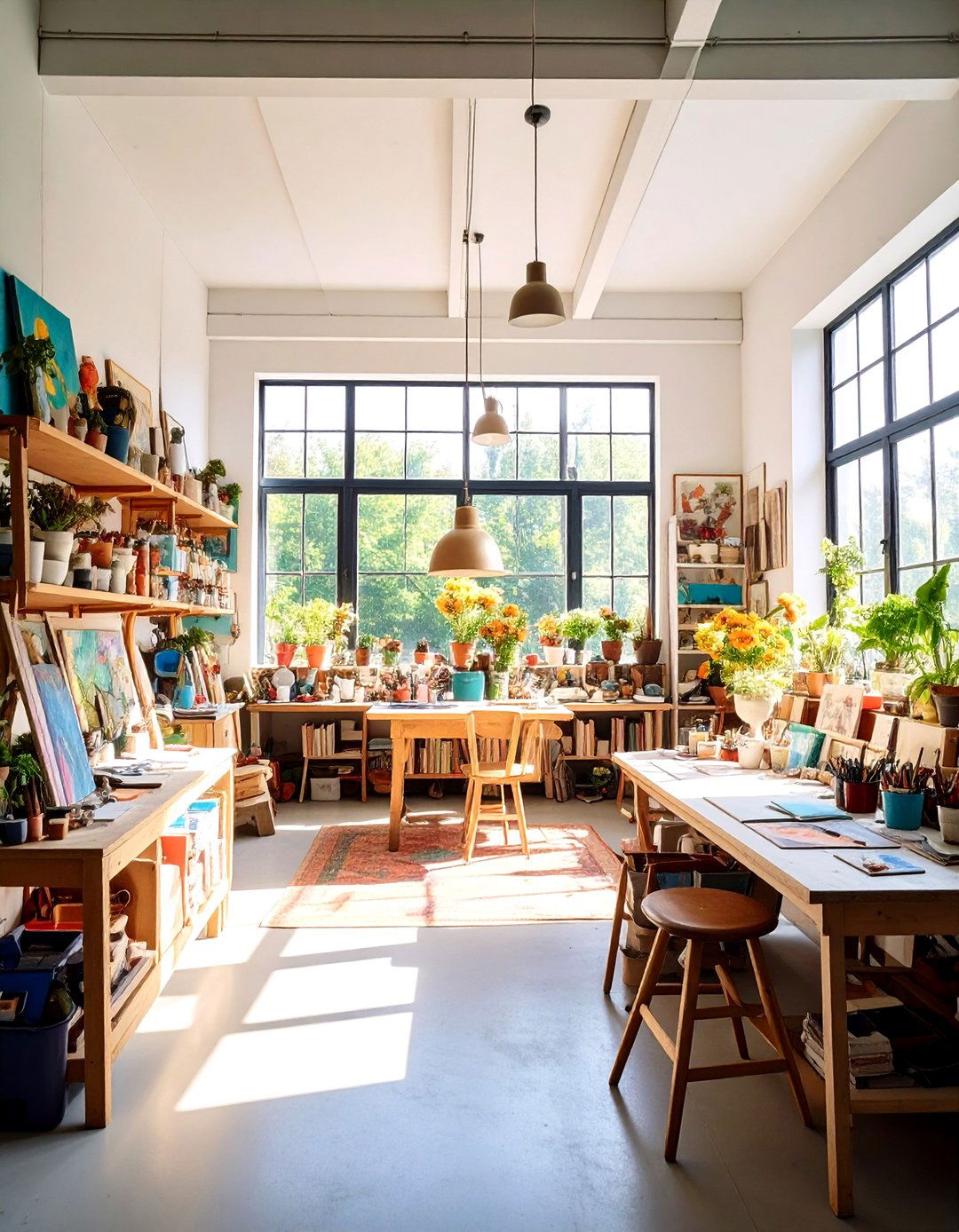

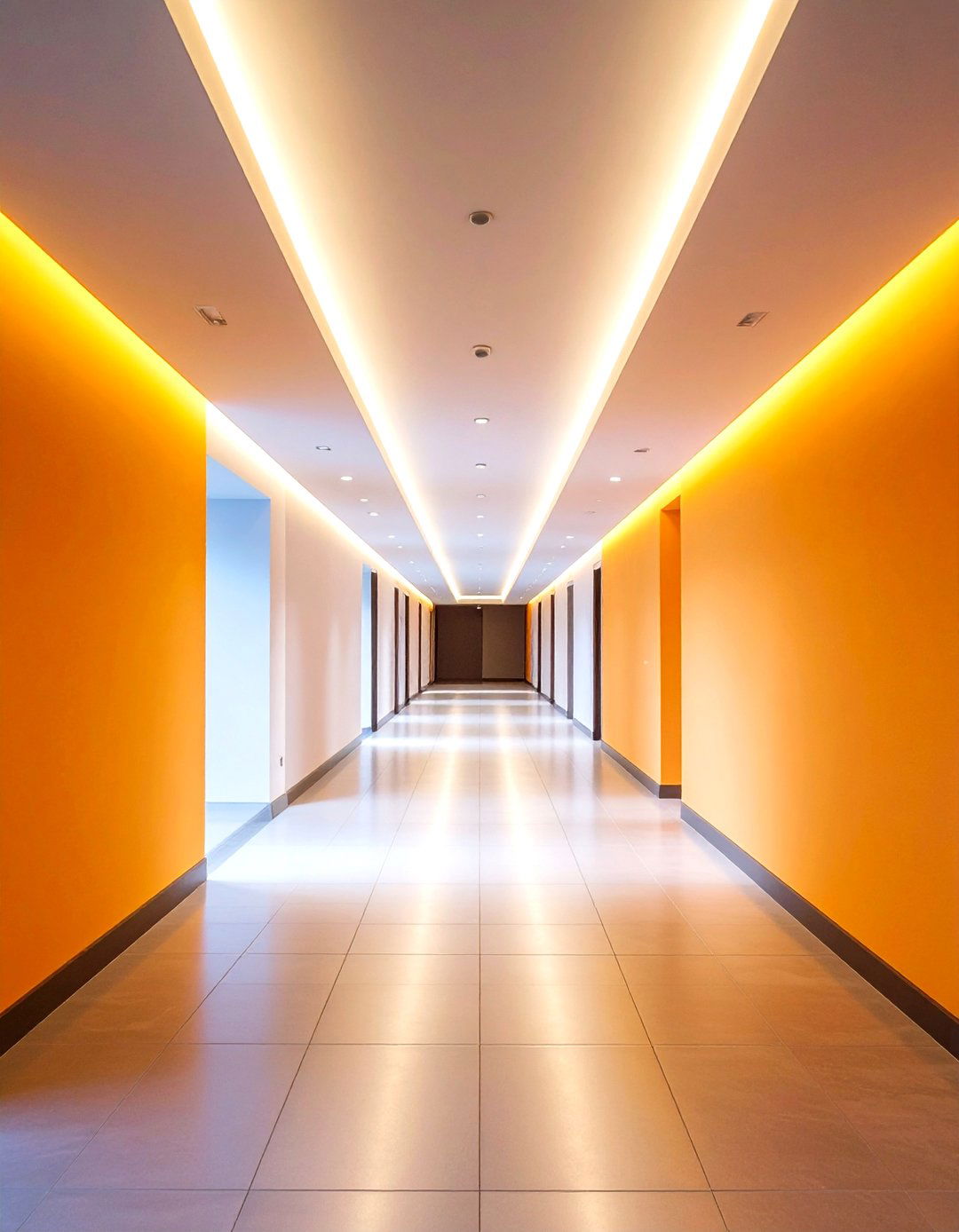

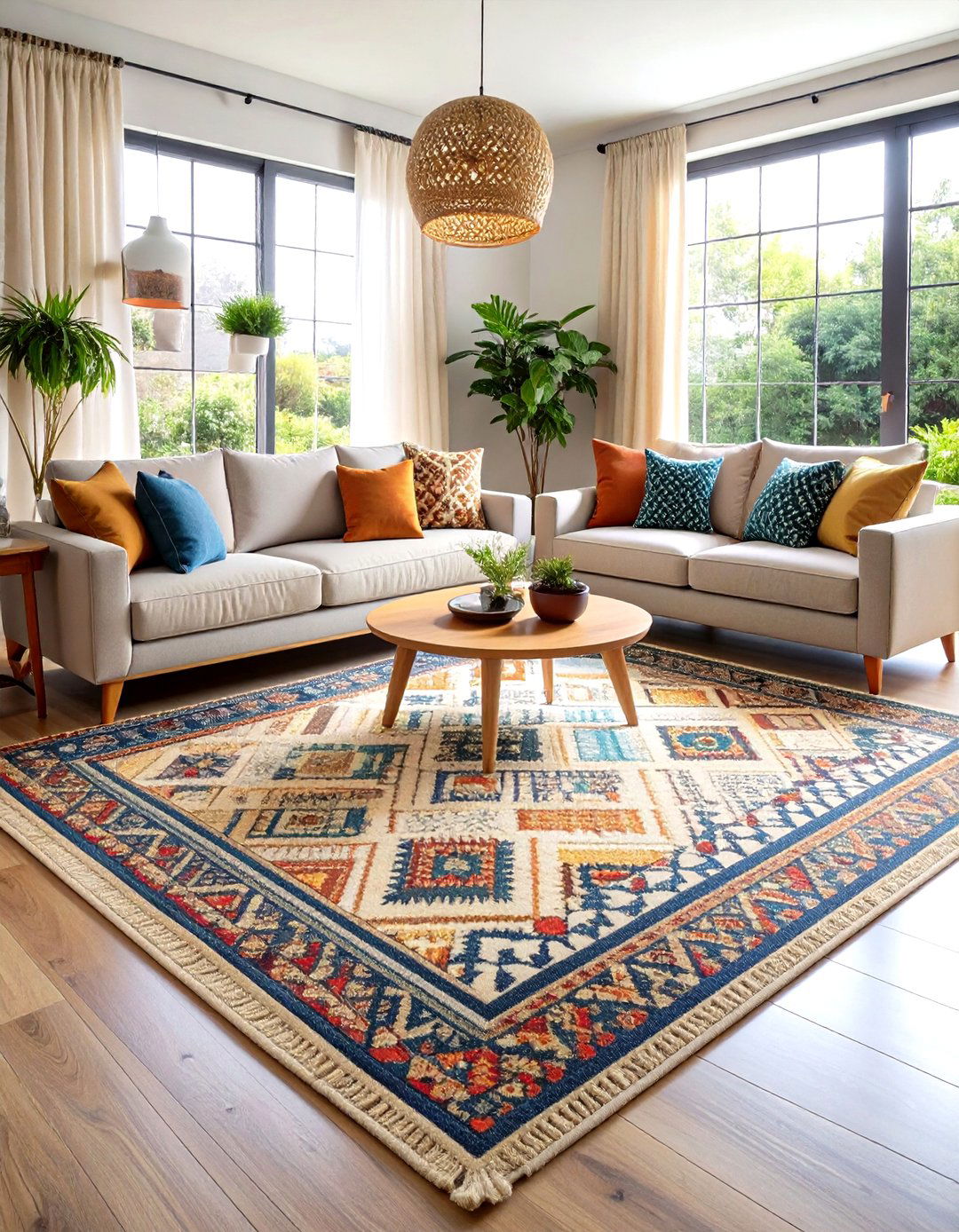


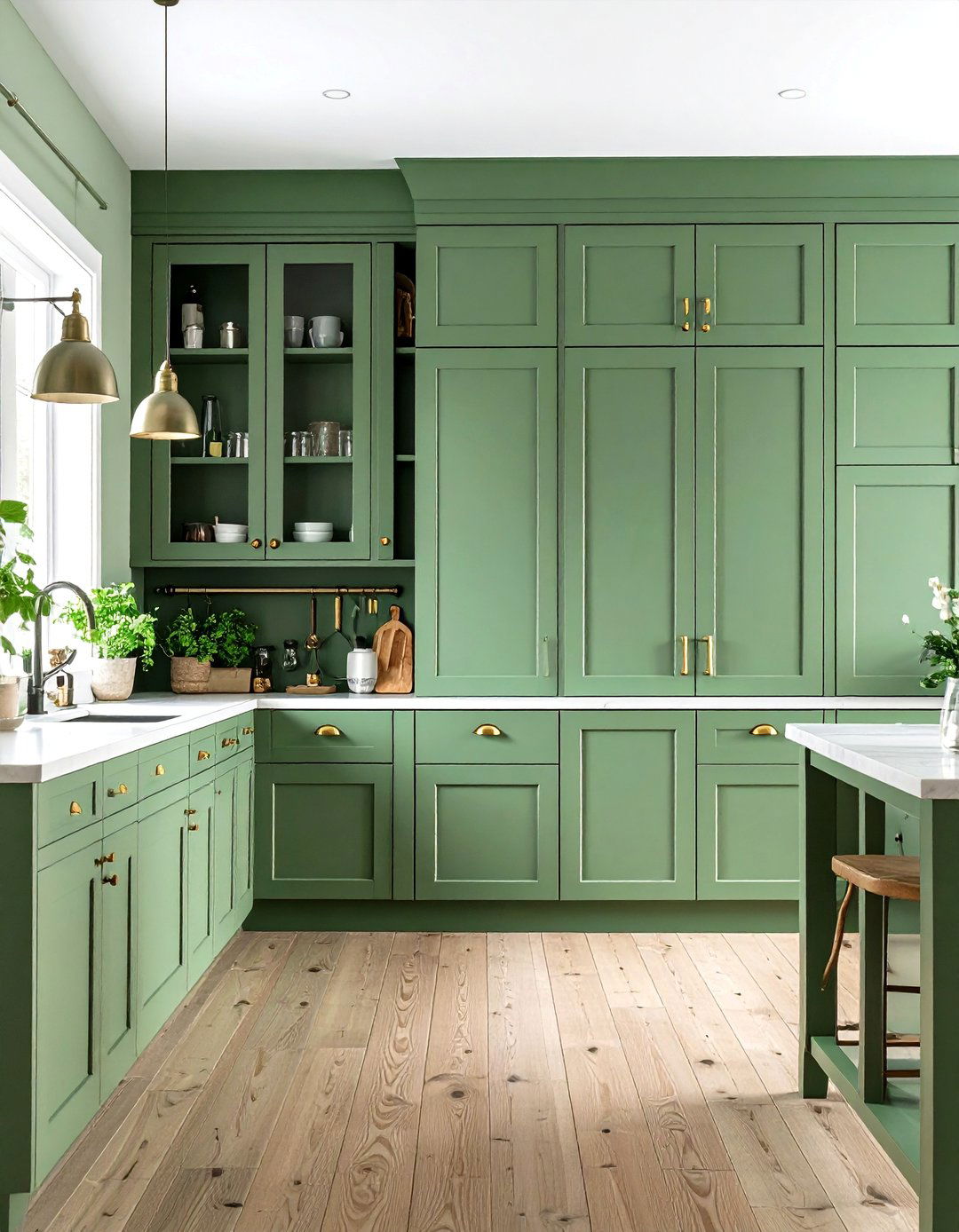

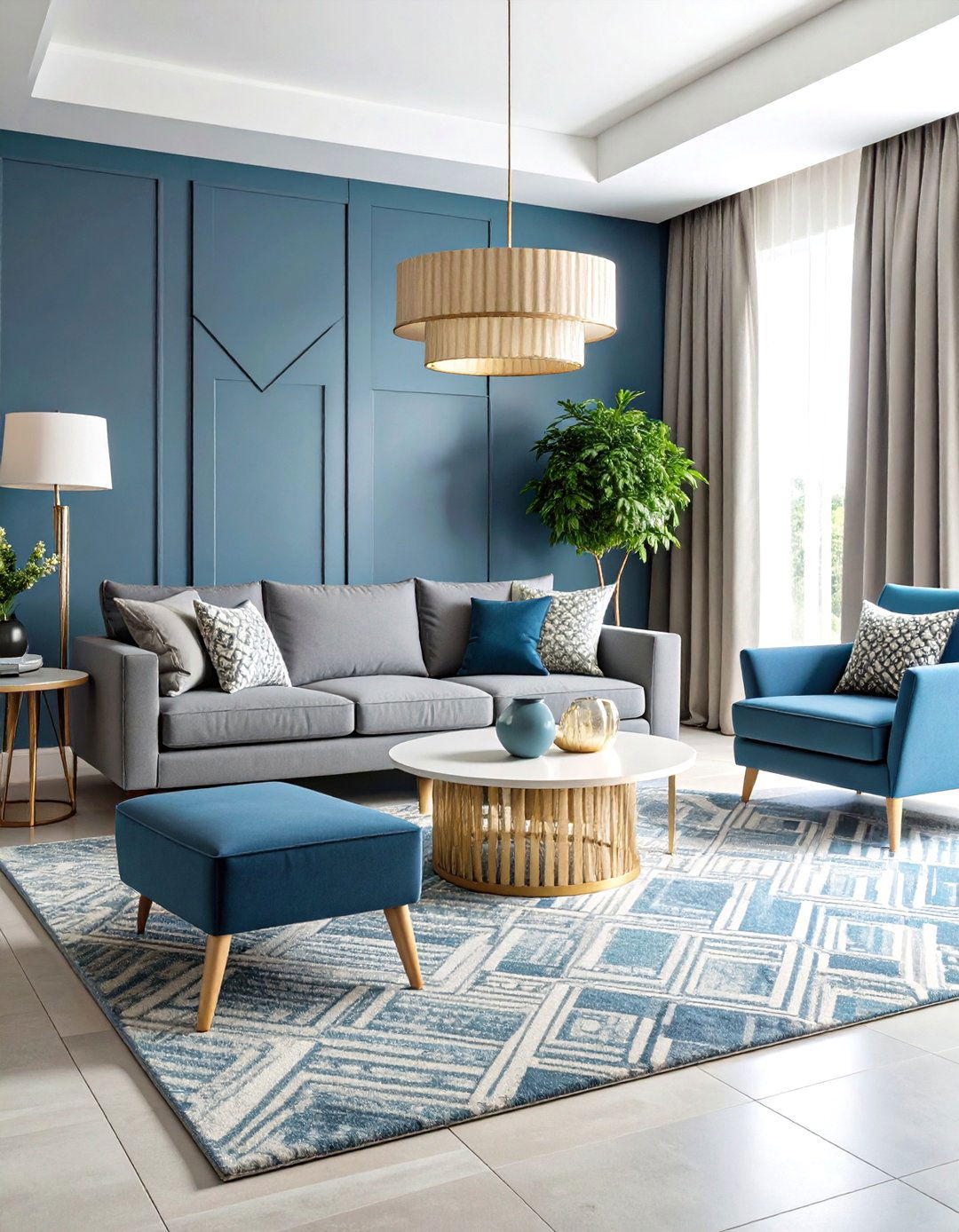
Leave a Reply